






Supporting research, education and initiatives for children and young people via the Foundation is a further way to try to influence society in a positive direction. The Foundation’s work also gives us as a family an opportunity to come together in our community engagement and in our firm belief that knowledge is one of our most important shared resources.
We see initiatives for children and young people, education and research as important elements in building up a strong society, and our efforts in these areas aim to have a long-term effect. In these efforts we join forces with many others and see ourselves as part of a whole in which the diversity of those involved allows both opportunities and risks to be identified and managed based on various approaches. Although our philanthropic activities generally apply a long-term perspective, another of the strengths of philanthropy is that efforts can be mobilised quickly when needs arise suddenly.
Over the past year there have been many examples of such needs arising suddenly. The world has been shaken by the invasion of Ukraine and the human suffering that has followed in its wake. At the beginning of March 2022 the Foundation decided that as a first step it would donate SEK 75 million each to Save the Children and the Red Cross for their operations in the region. At the end of the year a further SEK 50 million was donated to each organisation, making a total of SEK 250 million to support those affected. We chose Save the Children and the Red Cross because their efforts focus on children and on medical efforts, which are two of the Foundation’s focus areas.
Research and development are important for society’s ability to come up with new solutions to both old and new problems. The pandemic in particular provided examples of how, thanks to research, it became possible to produce diagnoses, medicines and vaccines in a shorter time than ever before.
In this Annual Review we report on the support provided by the Foundation in 2022, including various examples of research that aims to improve both the diagnosis and treatment of diseases and other health problems. In a project based at both KTH Royal Institute of Technology and Karolinska University Hospital in Stockholm, Niclas Roxhed – a specialist in micro- and nanosystems – wants to package biologic drugs so that patients can take them themselves in tablet form, avoiding injections that can be unpleasant and in some cases may require assistance from care personnel. Anna Rostedt Punga at Lund University is investigating how the neuromuscular condition myasthenia gravis differs between patients, in the hope of being able to offer more individualised treatments in the future. Also at Lund University, Lisa Rydén is working to produce an AI tool to help avoid unnecessary surgery in cases of breast cancer. Gunnar Pejler talks about his research at Uppsala University and his hope that in the future it will lead to completely new treatment options for the common condition of asthma.
Entrepreneurship and research are related in the sense that both intend to solve a problem – or to meet a need, if you prefer – thereby bringing about change. The pandemic provided us with plenty of examples of the benefits of tackling challenges
The Erling-Persson Foundation has its origin in the Persson family’s interest in entrepreneurship and how entrepreneurship can contribute to real social change.
KNOWLEDGE
STEFAN PERSSON
in an entrepreneurial way. The desire to find new solutions gave rise to a wealth of new services and products, with social entrepreneurs, member-driven initiatives and profit-driven companies all able to contribute in various ways to responding to people’s needs. Support for education that encourages entrepreneurship has been one of the cornerstones of the Foundation ever since it began. Stockholm School of Entrepreneurship and Stockholm School of Economics are two organisations that have made a long-term contribution to development in this area with support from the Foundation.
People with knowledge, curiosity and ideas are one of the most important resources for both research and entrepreneurship. Giving our children and young people good conditions for learning, combined with a willingness to ask questions and test out their own abilities, is therefore vital both for the individual and for the continued development of our knowledge-intensive society. This is why supporting the development of children and young people, as well as supporting tuition and education, have always been matters close to our hearts.
In the past year the Foundation has awarded its largest single donation to date with a grant of SEK 600 million for the construction of the planned Nobel Center. Aimed at the general public as a whole, the Nobel Center will encourage tuition and education in its broadest sense. We will have opportunity to return to this as the project progresses.
In our review of the year’s operations we are highlighting through interviews several initiatives that in various ways and with support from the Foundation are helping young people to achieve their dreams. The Mattecoach (Maths Coach) project is opening the door to the world of mathematics for primary and secondary school students, as Daniel Carlsson of Linköping University explains. At the same time as making individual students better able to cope with their studies, it will enable more young people to go on to higher education and thereby help to tackle the challenges of the future. Karin Forslind and Mia Stagh talk about how Alhanko Academy of Ballet is getting young people to grow both as people and as dancers. Under Leo Razzak’s leadership Värmeverket has established itself in the Stockholm suburb of Bredäng, where it allows young people to discover how their creative activities can become sustainable long-term through entrepreneurship. Katarina Nilsson and Johan Oljeqvist talk about Fryshuset’s project Lampan (The Lamp), which is helping young people find their way onto courses and into the labour market.
Children and young people face significant challenges in various respects. We read almost on a daily basis about the insecurity in which many children are growing up, and how it is affecting their lives in both the short and the long term. Knowledge of how to counter this insecurity and its effects is also increasing day by day. We know that successful schooling is important, but that meaningful leisure activities and good role models among both parents and others can also be decisive for confidence in their own abilities. It is also clear that no single initiative can turn the tide on its own. As a Foundation we hope to make continued investments going forward that contribute in a meaningful way to our society’s work to enable young people to succeed.
At the end of 2022 the Foundation lost a highly valued board member with the death of Sigbrit Franke. Her contribution to the board’s work has been invaluable. Sigbrit was born at a time when there were great inequalities in access to higher education and she was able to give a first-hand account of how significant some of her mentors were in her taking the first step towards an extremely successful academic career. Knowing that someone believes in you and finding your path can be crucial. This reminds us that what was true then is equally true now. Hopefully some of the initiatives that the Foundation supports will provide young people with the spark to find their path, just as Sigbrit did, and contribute to society in a positive way.
Stefan Persson Chair of the Board“In the past year the Foundation has awarded its largest single donation to date with a grant of SEK 600 million for the construction of the planned Nobel Center. Aimed at the general public as a whole, the Nobel Center will encourage tuition and education in its broadest sense.”
Since the Erling-Persson Foundation was formed in 1999 it has made more than 270 donations totalling SEK 4.6 billion. The long list of recipients includes Karolinska Institutet, Stockholm School of Economics and Fryshuset.
In 1947 Erling Persson established the company that has developed into the global H&M Group we know today. The Erling-Persson Foundation was formed in 1999, in memory of his many achievements in retail and enterprise, financed by donations from the Persson family.
The family is passionate about entrepreneurship as a positive force in society, so supporting education in this area was a natural initial focus area for the Foundation. Before long two more focus areas were added, aimed at equipping society better for the future: support for research and support for the development of children and young people.
The Foundation considers meeting and collaborating to be important for stimulating new thinking and new solutions. It is therefore pleased to support interdisciplinary ventures and projects that link together different sectors of society.
The Foundation’s commitment to the projects it supports is based on confidence that the project owner has the capability to expand the boundaries of our shared knowledge and understanding, and a sure and certain belief that knowledge changes and improves lives. More than 270 donations have been made to date, with the Foundation having given SEK 4.6 billion to causes that benefit society.
The largest single donation so far, SEK 600 million, was made to the Nobel Center Foundation in 2022. The donation will enable the construction of the new Nobel Center at Slussen in Stockholm. Along with its contents, the building will inform, inspire and stimulate.
Various entrepreneurship courses have together received around SEK 700 million, with Stockholm School of Economics, Stockholm School of Entrepreneurship and the Royal Swedish Academy of Engineering Sciences (IVA) major recipients. A donation of SEK 75 million from the Foundation also enabled the start of education and research in fashion studies, with the Centre for Fashion Studies now well established at Stockholm University.
In the scientific field, research into type 1 diabetes is the area where the Foundation has made its largest contribution, amounting to around SEK 400 million to date. Significant support has also been given to research in areas such as cancer, cardiovascular disease, antibiotic resistance and neurological disease.
Fryshuset was the first children’s and young people’s organisation to receive support from the Foundation for its activities. So far, its projects have received funding from the Foundation totalling around SEK 170 million, helping Fryshuset to develop into a highly valued centre for children and young people within sport, knowledge, leisure activities and more. Organisations for children and young people have together received around SEK 520 million.
At the end of 2022 donations to the three focus areas were distributed approximately as follows (in SEK): 45 percent to research, 45 percent to education and 10 percent to children and young people.
383
Stockholm School of Entrepreneurship (SSES) is an interdisciplinary collaboration between six universities and colleges in which students cooperate to create the innovations and enterprises of tomorrow. Over more than 20 years SSES has received total support of SEK 383 million.
1999
In 1947 Erling Persson established the company that has developed into the global H&M Group we know today. In 1999 the Erling-Persson Foundation was formed, in memory of his many achievements within retail and enterprise.
75
The Centre for Fashion Studies was established at Stockholm University in 2006, aided by a donation from the Foundation totalling SEK 75 million. Since 2018 fashion studies has been an independent academic discipline at the university.
1
Education at universities and colleges has received support of SEK 1 billion since the Foundation was established.
4
The Foundation’s board holds regular meetings four times a year.
4.628
Since the Foundation was formed in 1999 it has handed out more than SEK 4.6 billion to its three focus areas.
138.5
Education and research in the areas of climate and the environment are important for being able to build a sustainable future. Through various initiatives the Foundation has donated SEK 138.5 million to these areas.
2.023
Over the years around SEK 2 billion has been awarded in the area of Tuition & Education, representing around 45 percent of all donated funds.
400
A donation of around SEK 400 million was made to Karolinska Institutet in 2010 and enabled the building of the Aula Medica, a 10,000 square metre complex serving the needs of research and education.
520
By 31 December 2022 the Foundation had granted funding to 75 projects that promote the development of children and young people, amounting to SEK 520 million in total.
45%
Just under half of the total funds distributed by the Foundation, or SEK 2 billion, has been awarded to research projects led by Swedish universities and colleges.
150
The Foundation receives more than 150 applications for project support every year. Around 100 of these are research applications.
2022 began with a feeling of recovery and hopefulness following the pandemic. The invasion of Ukraine changed the situation in the world overnight, resulting in great humanitarian need. The Foundation decided to get involved in helping to alleviate the situation for people affected by the war, while at the same time substantial long-term support for research and education was also awarded – overall making 2022 the year when the Foundation donated the biggest funding in its 23-year history. Award decisions totalled just over a billion kronor, with donations being distributed to 29 initiatives.
In the area of science and research, 12 projects were awarded a total of SEK 127.3 million. The projects span areas such as cardiovascular disease, diagnosis of and treatments to fight cancer, degenerative illness and autoimmune conditions, and pathways to new drug treatments.
Seven organisations working for the development of children and young people shared just over SEK 39 million. The various projects focused on the physical and mental wellbeing of children and young people, on countering negative consequences of exclusion, on lowering thresholds so that young people can find meaningful leisure activities, and on working to help young people find their way to courses and careers.
The plans for a new Nobel Center at Slussen in Stockholm were presented in the spring, and the Erling-Persson Foundation decided to join with the Knut and Alice Wallenberg Foundation in enabling the Center to be built. The Erling-Persson Foundation is supporting its construction with a donation of SEK
600 million. The hope is that the Center will make new knowledge, inspiration and exciting encounters accessible to broad and growing target groups in the long term, bringing together science, culture and peace efforts as driving forces for positive global development – more relevant now than for a long time. The donation is the Foundation’s largest individual educational initiative to date.
To support people affected by the war in Ukraine, the Foundation targeted donations at operations within its focus area of children and young people and of medicine and healthcare. Save the Children and the Red Cross therefore received a total of SEK 125 million each, in two instalments, for their efforts for those in need in Ukraine and the surrounding area. At the beginning of 2022 we said that civil society efforts to help those affected will be needed for a long time to come. Regrettably, that still holds true; but we are also seeing continued resilience among the population and civil society.
Ylva Linderson Research secretaryResearch secretary Ylva Linderson sums up a year in which the Foundation has made the biggest donations in its history.
Research secretary Ylva Linderson summarises the year.


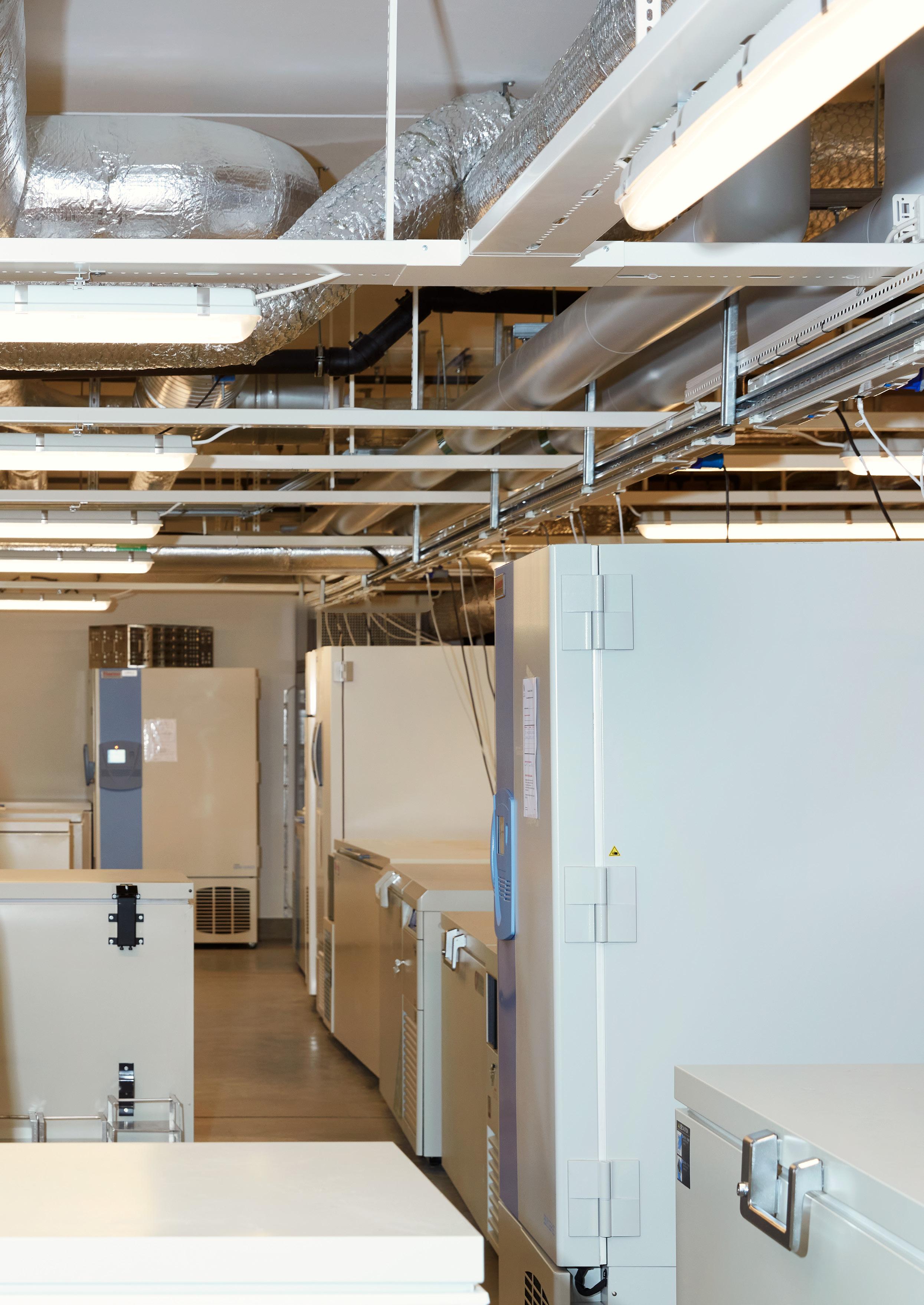
effects
depending on which subgroup of the condition a person is affected by. By identifying the molecular signatures of these subgroups, Anna Rostedt Punga hopes that the right treatment can be better targeted to the right patient.
The first symptom of the condition myasthenia gravis (MG) is often one or both eyelids starting to droop, giving a sleepy appearance. Anna Rostedt Punga, Senior Consultant and Professor of Clinical Neurophysiology at Uppsala University, says this inspired Walt Disney when designing the characters for the 1937 animated feature film Snow White and the Seven Dwarfs
“He had a good friend with myasthenia gravis and that’s where he took this characteristic look of the dwarf Sleepy from,” she says.
Droopy eyelids may sound harmless, but MG is due to damaged contact between nerves and muscles. Symptoms often vary over time and in the worst case can affect breathing. In Sweden around 2,500 people live with this condition. The incidence is increasing both here and in the rest of the world, partly due to better diagnostics.
“And also we’re getting healthier as older people, so we have less tolerance for being affected by poor muscle strength than we used to,” she says.
Her own interest in the condition arose in 1997 while studying to become a doctor and practising in the Department of Clinical Neurophysiology at Uppsala University Hospital.
“I found it incredibly interesting to try to understand what the patients’ different symptoms were due to – pure detective work,” she says.
She began researching into MG in 1999 during her first project at Duke University in the USA.
“It was an interesting patient group to be involved with, so that got me hooked,” she says.
MG is an autoimmune condition in which the
body mistakenly produces antibodies to its own structures. It is treated with immunosuppressants, primarily cortisone. Recently, targeted biologic drugs have also been developed – for example, targeting various parts of the so-called complement system that is part of the immune system. Drugs that wipe out the B cells that form antibodies are also being tested.
The condition can be split into six different subgroups. These are based on symptoms – whether its onset occurs early or late in life, whether it affects the eyes or is generalised, whether it is linked to thymoma (a type of cancer that affects an organ called the thymus gland) and which antibodies are involved.
A downside is that there is no objective measure of how well a certain treatment works.
“We can measure different types of antibodies and test how muscles react to fatigue. That’s good for making a diagnosis of MG, but because the condition produces such varied symptoms in different individuals it is difficult to measure the effect of treatment,” she says, continuing:
“It also makes it hard to predict who will react well to a certain treatment.
In the project Towards personalized medicine in myasthenia gravis Anna Rostedt Punga and her colleagues hope to remedy this deficit. The project’s design can be likened to a three-stage rocket.
In the first stage they hope to find molecular signatures in the blood for the disorder’s six subgroups. The idea is that these are characterised by different incidences of microRNAs – something that the group showed in a study published in Cells in 2022 – and proteins. Extracted from blood samples

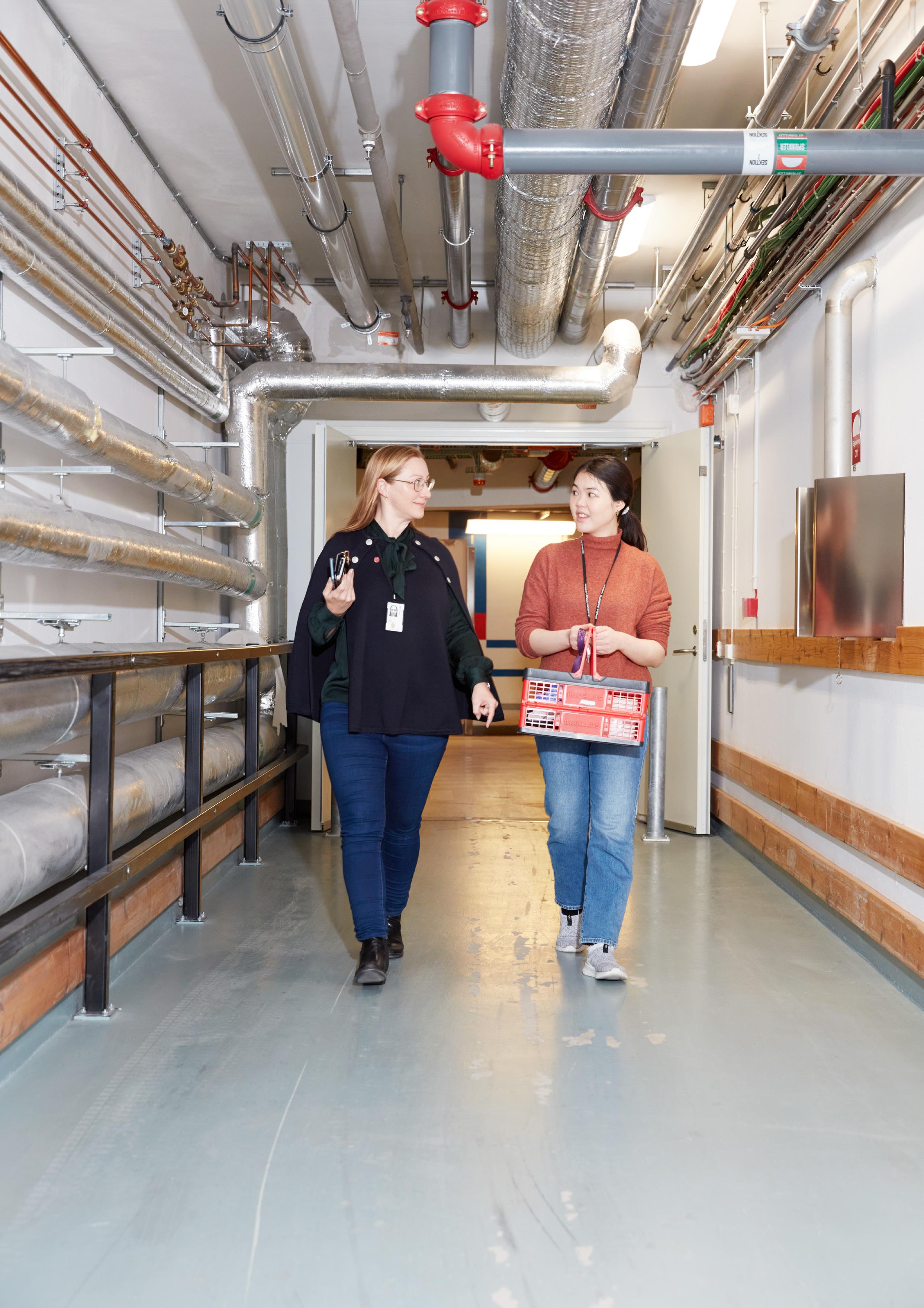
In frozen blood samples from patients the researchers are hunting down the molecular signatures that distinguish the six subgroups of the condition myasthenia gravis.

The researchers are cultivating human nerve and muscle cells on chips to see how patients’ antibodies damage the connections between the cells in these ’mini-patients’.

from around 50 patients in each category, they will be compared with samples from an equal number of healthy individuals to find what stands out. Samples from newly diagnosed patients will also be included. This will make it possible to track how they change as different treatments are implemented, providing a better understanding of what works best.
Stage two will focus on the 10 percent of those with MG whose symptoms do not improve with the current treatment.
“As we described in Lancet Neurology in 2022, here we believe that it may transition from being an autoimmune condition into a neurodegenerative form. Once again, we want to find its molecular profile,” she says.
Samples from 10 patients with this type of MG will be collected and compared with samples from 10 other MG patients as well as samples from 10 healthy individuals. The aim is to identify the ways that the connection between muscles and nerves is destroyed that is unique to treatment-resistant MG. The hope is that parts of these specific chains of events could form future targets for treatment.
In the third stage, the researchers want to create new and better disease models.
“Most of what we know today comes from studies in rats and mice, but they do not always develop MG even if given the right types of antibodies. Here we have a unique model that we want to be based on patient material,” she says.
They are using electronic chips three by four millimetres in size with 24,600 electrodes on the
1672
This was when myasthenia gravis was described for the first time, by the doctor Thomas Willis of Oxford, although the Latin name of the condition did not become well established until 1903.
surface, which they described in the journal Frontiers of Physiology in 2018. On these chips they will now cultivate nerve and muscle cells. To this artificial neuromuscular connection will then be added patient serum containing various patients’ unique antibodies. The researchers can then study in real time how antibodies from the different patients damage the connection between nerve ends and muscle cells.
“These chips become a kind of ’mini-patient’ each with their own chain of disrupted signals between nerves and muscles,” she says.
The overall aim is to identify what is going on in different variants of the condition in order to achieve the understanding required for personalised targeted treatment.
“Until now all patients have been lumped together, but we want to be able to adapt follow-up and treatment to each individual patient,” she says.
“The support from the Erling-Persson Foundation means a clear fresh start for the project, with new employees and also a move to new premises. Both our investigations and developing the chip model are expensive, and above all the support provides us with an opportunity to bring in patients from all over the country – which is important for validating our methods,” she says.
She also thinks it is good that the condition is attracting attention.
“MG needs to be discovered in time. I have had patients – often young women – who have been living with a diagnosis of burnout for several years when they actually had MG,” says Anna.
2,500
The number of people in Sweden living with the condition myasthenia gravis.
24,600
The number of electrodes on the chip measuring three by four millimetres where muscle and nerve cells are to be cultivated to create patient-specific disease models.
Project manager: Anna Rostedt Punga, Professor and Senior Consultant in Clinical Neurophysiology, working at Uppsala University and Uppsala University Hospital.
Title: Towards personalized medicine in myasthenia gravis.
What it involves: Three subprojects will characterise the six subgroups of MG, what characterises treatment-resistant MG and create patient-specific disease models on chips that can be used to test various kinds of drug treatment.
Funding: The Erling-Persson Foundation is supporting the project with a total of SEK 6.5 million over four years.

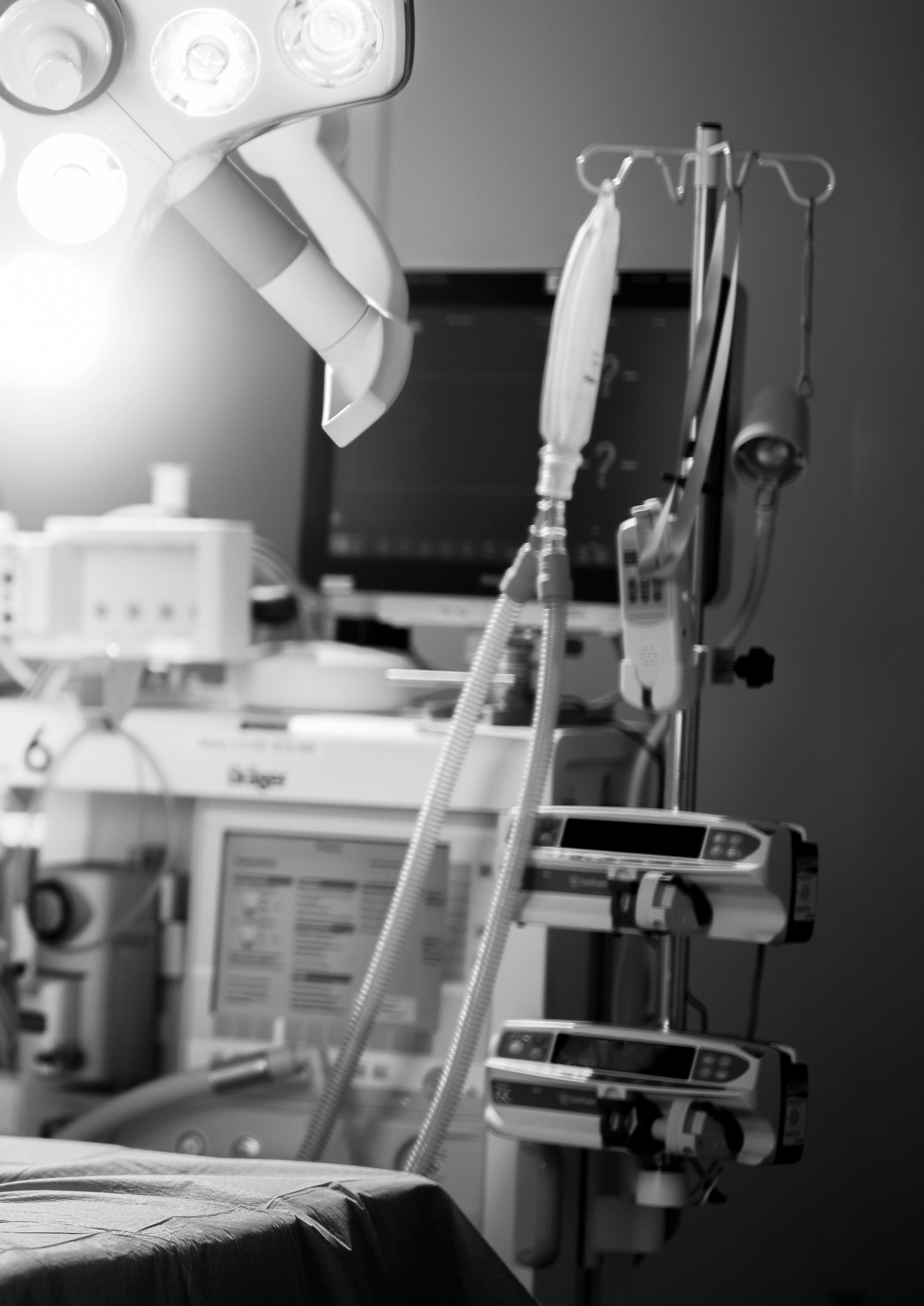
Biologic drugs consist of large molecules such as genetic material, peptides or antibodies. At present they need to be given by injection or by drip, but Niclas Roxhed aims to make it possible to swallow them – since people prefer to take tablets than to have injections.
Biologic drugs have become increasingly common in recent years. They can consist of genetic material of various types (DNA and RNA), of short chains of protein called peptides, or of complete antibodies. Unlike regular drugs that are small, chemical molecules, biologic drugs cannot be taken orally. This is because our gastrointestinal tract is designed to break down biological molecules, so they have had to be administered directly into the blood or through the skin into a muscle cell. That is something that Niclas Roxhed, a lecturer in micro- and nanosystems at KTH Royal Institute of Technology in Stockholm, wants to change. During his degree in electronic engineering he already realised that he wanted to devote himself to medical technology.
“It felt more meaningful than developing the next generation of mobile phones – a chance to do some good and save human lives,” he says.
He began his doctorate in 2003 and focused on creating microneedles – needles a hair’s breadth in diameter – that were capable of injecting insulin into the skin just as well as regular needles.
In 2015 a message popped up in his inbox that was to change the direction of his career. By then he already had his own research team at KTH, but when Bob Langer at Massachusetts Institute of Technology (MIT) wondered if he would like to spend some time at his laboratory as a visiting expert in microneedles he jumped at the chance.
“I had known of him throughout my career, because he is the world’s most cited engineer and very successful within medical technology. So in 2016 I
set off with my entire family for Boston, where we stayed for nearly two years,” he says.
The project involved investigating whether it was possible to use microneedles to inject drugs directly into the digestive tract. The mucosal lining of the gastrointestinal tract contains many blood vessels, which means that minor wounds heal quickly. Moreover, the gastrointestinal tract is not sensitive to injection pain – only to strain, as those who have undergone endoscopy will know.
“We also know that the intestine is much easier to penetrate than the skin, which has a hard outer layer of dead skin cells known as the stratum corneum. In the intestine it’s like cutting through butter with a hot knife, which means that microneedles only have to reach the mucosal lining,” he says.
During his time at MIT he designed a pea-sized capsule containing a small syringe. Using a metal spring that was activated when the capsule was swallowed and reached the stomach, a small dose of insulin was injected there.
“This got a lot of coverage in 2019 in the journals Nature Medicine and Science. A pharmaceutical company is now in the process of developing the technology so that people with diabetes can swallow their insulin instead of requiring injections,” he says.
He himself has left the hollow syringes behind,
“I’m proudest of having realised that you can create the needles from the drug itself.”
however. He describes how as a researcher today you also need to be an entrepreneur, and within medical technology you need to patent your inventions so that at a later stage they can be developed into medical products.
“The patent I’m proudest of is that I realised that you can create the needle from the drug itself –in other words, shape the powder into a pointed needle. That was thinking outside the box.”
The microneedles are created on a small patch –40 needles on a surface 20 square millimetres in size. He will now develop this technology further in the project Enabling oral delivery of biologic drugs. The idea is to create needles from two different drugs, insulin and adalimumab – a very common antibody drug that is currently used for, among other things, rheumatism of the joints.
The small patch to which the microneedles are attached is encapsulated in a tablet-like shell that dissolves once it has passed through the acid stomach and reached the neutral pH environment of the small intestine.
He is hopeful and sees great potential going forward for biologic drugs that can be swallowed.
“The pharmaceutical companies currently have
the capacity to produce biologics against a number of different diseases. But until there is a simple patient-friendly way to take them, they will not develop drugs to treat diseases that are not directly fatal. This is because they know that people would rather take tablets than have injections,” he says, continuing:
“We also know that doctors prefer to prescribe tablets rather than injections, even where treatment by injection would be more effective.”
He gives the example of the Covid vaccines produced during the pandemic, which consist of the biological molecule mRNA.
“Imagine if these could have been given as tablets rather than injections! It would have been so much more convenient if we hadn’t needed the logistics behind mass vaccinations via injection and an unbroken frozen supply chain,” he says.
“The support from the Erling-Persson Foundation means everything for being able to get this project going. The project is expensive, not least because we need to test it in many different models,” says Niclas Roxhed, continuing:
“But it feels hugely important, and if we get it to work it will affect the lives of billions of people.”
The percentage of those who do not follow the doctor’s instructions when prescribed medicines.
millimetre is the length of the needle, which is made from the drug itself, with a diameter of approximately 0.2 millimetres.
The number of microneedles that can fit on a surface measuring 20 square millimetres.
Project manager: Niclas Roxhed, lecturer in micro- and nanosystems at KTH Royal Institute of Technology in Stockholm, and head of MedTechLabs, a research centre funded by KTH, Karolinska Institutet and Region Stockholm.
Title: Enabling oral delivery of biologic drugs.
What it involves: Being able to package biologic drugs so that they can be swallowed, instead of having to be given by injection or drip as at present. The aim is to create microneedles from the drug itself that are then delivered into the gastrointestinal tract. The actual microneedles are encapsulated in a tablet-like shell that dissolves once it has passed through the acid stomach and reached the neutral pH environment of the small intestine.
Funding: The Erling-Persson Foundation is supporting the project with a total of SEK 8 million over three years.

Every year around 8,000 women in Sweden are diagnosed with breast cancer. Thanks to mammograms and women’s awareness of the importance of looking for lumps in their breasts, today more and more breast tumours are being found early. This means that most tumours are diagnosed at an early stage, but in around one in four cases tumour cells have spread to the lymph nodes. At present, lymph nodes are routinely removed in the corresponding armpit. This intervention leave 7 to 10 percent of those who have the surgery with ongoing problems such as the oedema, tingling and shoulder problems.
whether the cancer had spread to the lymph nodes – something that is routine clinical practice today.
Lisa Rydén had already become interested in how breast cancer spreads to the lymph nodes while studying for her doctorate.
“I asked one of my supervisors – who was a tumour pathologist – why there were no biomarkers for assessing the risk of spread to the lymph node.”
As there were none, she started to work on identifying such biomarkers. One reason is that although slightly more people are being diagnosed with breast cancer today, it has spread to the lymph nodes in a lower proportion of patients. And that proportion is reducing every year.
“Previously it had spread in around 40 percent of cases, but now it is 20 to 25 percent. Yet it is still routine to remove lymph nodes that in many cases are completely healthy,” she says.
Lisa Rydén, Senior Consultant at Skåne University Hospital and Professor of Surgery at Lund University, wants fewer patients to have to undergo this intervention.
“We want to be able to predict how likely it is that the cancer has spread to the armpit, so that women don’t have to undergo unnecessary surgery that affects their quality of life,” she says.
In 1997 the first studies appeared detailing the importance of analysing what is known as the sentinel lymph node in the armpit rather than removing a large part of the contents of the armpit. This was when the first lymph node to receive lymph fluid from the breast affected by cancer was identified. It was removed during surgery and analysed to show
In 2019 she and her colleagues described non-invasive lymph node staging (NILS) in a scientific article published in BMC Cancer. In very simple terms, this is a tool that uses artificial intelligence (AI) to analyse a range of different tumour data and images in order to determine the probability of this particular tumour having spread to the lymph nodes.
“In autumn 2018 we received support from the Erling-Persson Foundation to develops the NILS model further, which of course we were incredibly grateful for,” says Lisa Rydén.
Since then the work has continued without interruption. Over time, for example, the team has been able to show that if NILS were widely
“We want to be able to predict how likely it is that the cancer has spread to the armpit.”
With breast cancer it is routine that when having surgery to remove the tumour, lymph nodes in the armpit are also removed. Lisa Rydén is developing a system to help practitioners decide when such surgery is not necessary.
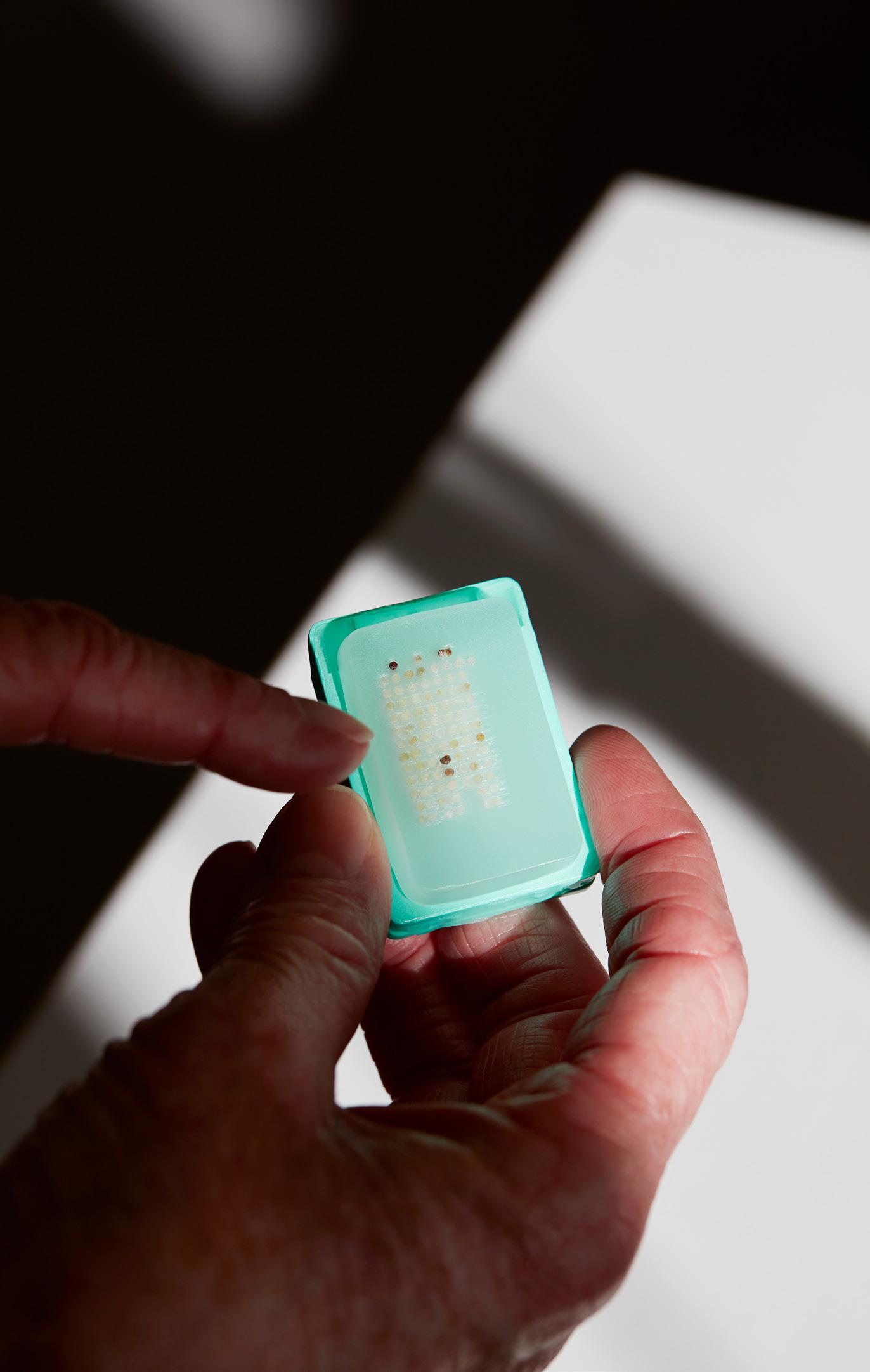
“Triple negative cancer spreads primarily to the blood, not to the lymph nodes. In these tumours there are many infiltrating immune cells and my hypothesis is that the degree and type of such infiltration may affect whether or not the tumour spreads to the lymph nodes.”
investigate the link between the genetic profile of the tumour and its ability to spread to
nodes by analysing patient samples.
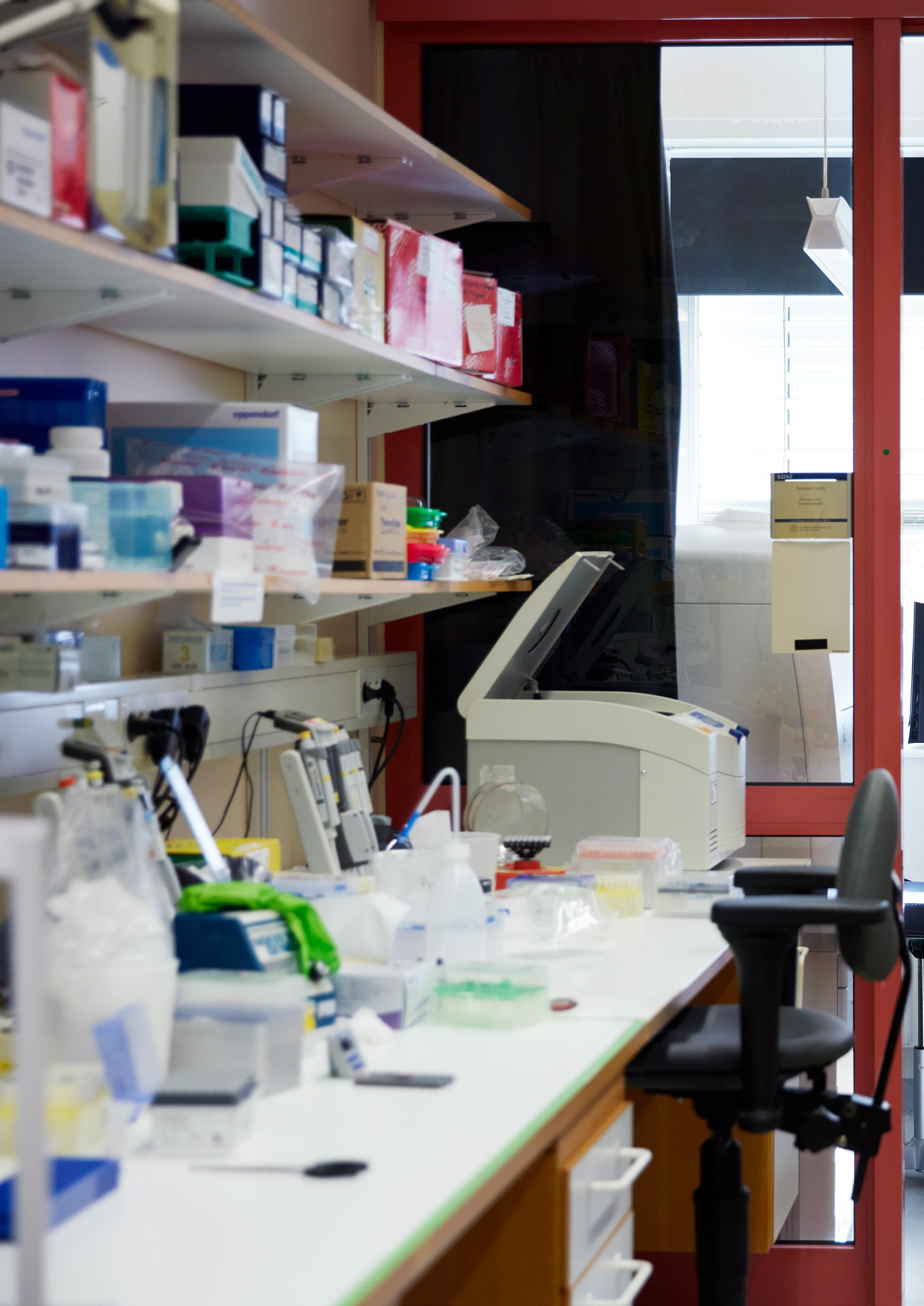 Lisa Rydén’s team will
lymph
Lisa Rydén’s team will
lymph
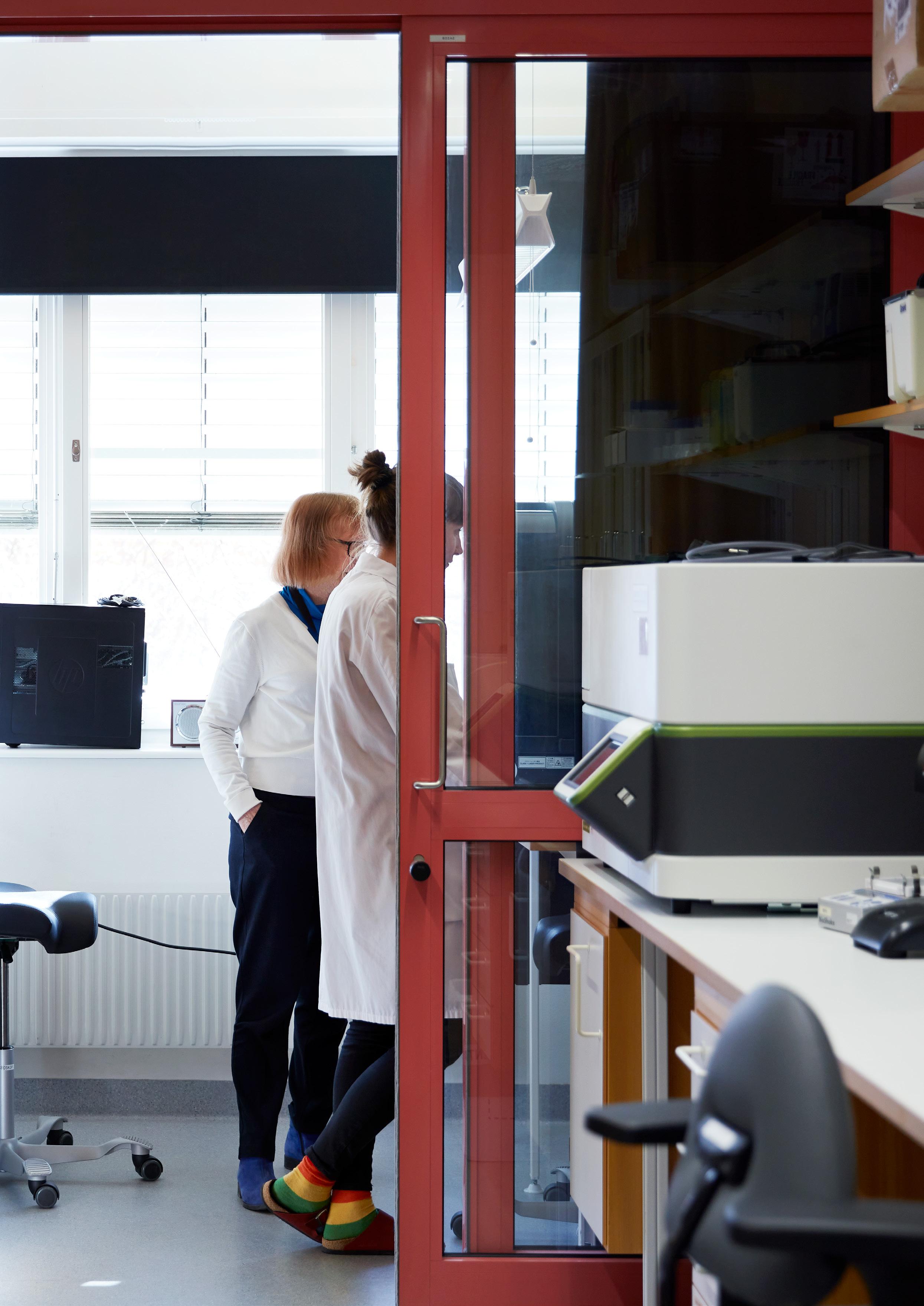
adopted the number of lymph node surgeries could be reduced by around a third – something that has been shown to be safe and cost effective even in a health economic evaluation. This was published in 2022 in Breast Cancer Research and Treatment
Today a prototype of NILS can be seen on Lund University’s website, but it is not yet available for clinical use.
“I gave a presentation to colleagues within oncology and surgery who were extremely interested, but the results need to be published scientifically before the model can start to be used outside the context of studies,” she says.
In the new project Improvement of the NILS model by integrating imaging and pathology features identifying node-negative breast cancer patients the model will be refined further. The work focuses on three areas in parallel.
In one part the information in mammogram images will be studied even more meticulously. Here AI is being trained on mammograms from around 700 patients, studying extracts from the images for the tumour’s texture, imperviousness and calcification. The AI will then analyse the mammogram images from 500 other women to decide the reliability of the findings.
“Here we want to see whether it is possible to link the incidence of certain signs in the mammogram images to the spread of cancer to the lymph nodes. AI is required here because these differences in the patterns in the images are difficult to discern with the human eye,” says Lisa Rydén.
These second part is based on the fact that breast cancer occurs primarily in four different molecular forms. Here the researchers want to see whether and how the genetic signatures of these different variants can be linked to its spread. Hormonal breast cancer most commonly affects older women, and these make up 80 per cent of cases. They generally have a good prognosis. At the other end of the scale is so-called triple negative breast cancer, which makes up 10 percent of all cases. These tumours have no hormone receptors on their surface, which makes them difficult to treat. They affect younger patients and have a worse prognosis than hormonal breast cancer. In addition there are two other forms of hormone-dependent cancer, which are mainly characterised by how quickly they grow.
“In this part our work will be based on the SCAN-B cohort, which covers all breast cancer patients in the Southern Sweden healthcare region who can provide blood and tissue samples,” she says.
This gives the researchers the opportunity to investigate in a large group of patients the link
between the genetic profile of the tumour and its spread to the lymph nodes. At the present time it has been possible to successfully analyse around 10,000 tumours in respect of gene expression.
“We want to start with a preliminary study so that we can then utilise the larger cohort in the best possible way. What we want is to gain a biological understanding of why spread varies between different forms of breast cancer,” she says.
In the third part of the project the aim is – if possible – to discover how the immunological profile of the tumour can be linked to its spread. Lisa Rydén says there are great differences between different types of tumours.
“Triple negative cancer spreads primarily to the blood, not to the lymph nodes. In these tumours there are many infiltrating immune cells and my hypothesis is that the degree and type of such infiltration may affect whether or not the tumour spreads to the lymph nodes,” she says.
Microscopic sections of different types of tumours are to be dyed so that six or seven of the various immune cells contained there can be seen.
“The question is whether there is a pattern that can explain why it spreads to the lymph nodes. This is a high-risk project – there may not be any clear link,” she says, continuing:
“But if it is possible to see, for example, that a high proportion of a specific type of infiltrating immune cells are linked to spread, this can be used both in diagnosing spread to the lymph nodes and also as a possible future target for treatment.”
She describes the work as being like doing a huge jigsaw puzzle, piece by piece.
“We want to get as much information as possible that we can use ahead of the surgery. The aim is for the woman and the doctor to get a figure that they can work with, that it is 98 percent likely that the tumour has not spread. Then, after careful consideration, a decision can be taken as to whether or not to operate,” she says.
She emphasises how welcome it was to receive
“We want to get as much information as possible that we can use ahead of the surgery. The aim is for the woman and the doctor to get a figure that they can work with, that it is 98 percent likely that the tumour has not spread.”
renewed support from the Erling-Persson Foundation for this development work.
“It indicates a long-term willingness to support the project, which means an incredible amount to
us. Naturally I was hugely pleased when we were awarded support the first time, but this is just as big – if not more so,” says Lisa Rydén.
8,000
The number of women diagnosed with breast cancer in Sweden each year, along with 30–50 men.
25
The percentage in which the cancer has spread to the lymph nodes in the armpit, but at present lymph nodes in the armpit are removed by surgery in 100 percent of cases.
7–10
The approximate percentage that have problems after the surgery in the form of oedema, delayed wound healing, and arm-related problems such as tingling, loss of sensation, tenderness and reduced movement in the shoulder.
ABOUT THE PROJECT
Project manager: Lisa Rydén, Senior Consultant at Skåne University Hospital and Professor of Surgery at Lund University.
Title: Improvement of the NILS model by integrating imaging and pathology features identifying node-negative breast cancer patients.
What it involves: Producing AI-supported web-based decision support in order to be able to assess the risk of a particular woman’s breast cancer having spread to lymph nodes in the armpit. In the project the tool is to be improved further using data from mammograms, genetic analysis of tumour material and analysis of immune cells in the tumours.
Funding: The Erling-Persson Foundation is supporting the project with SEK 8 million over three years.
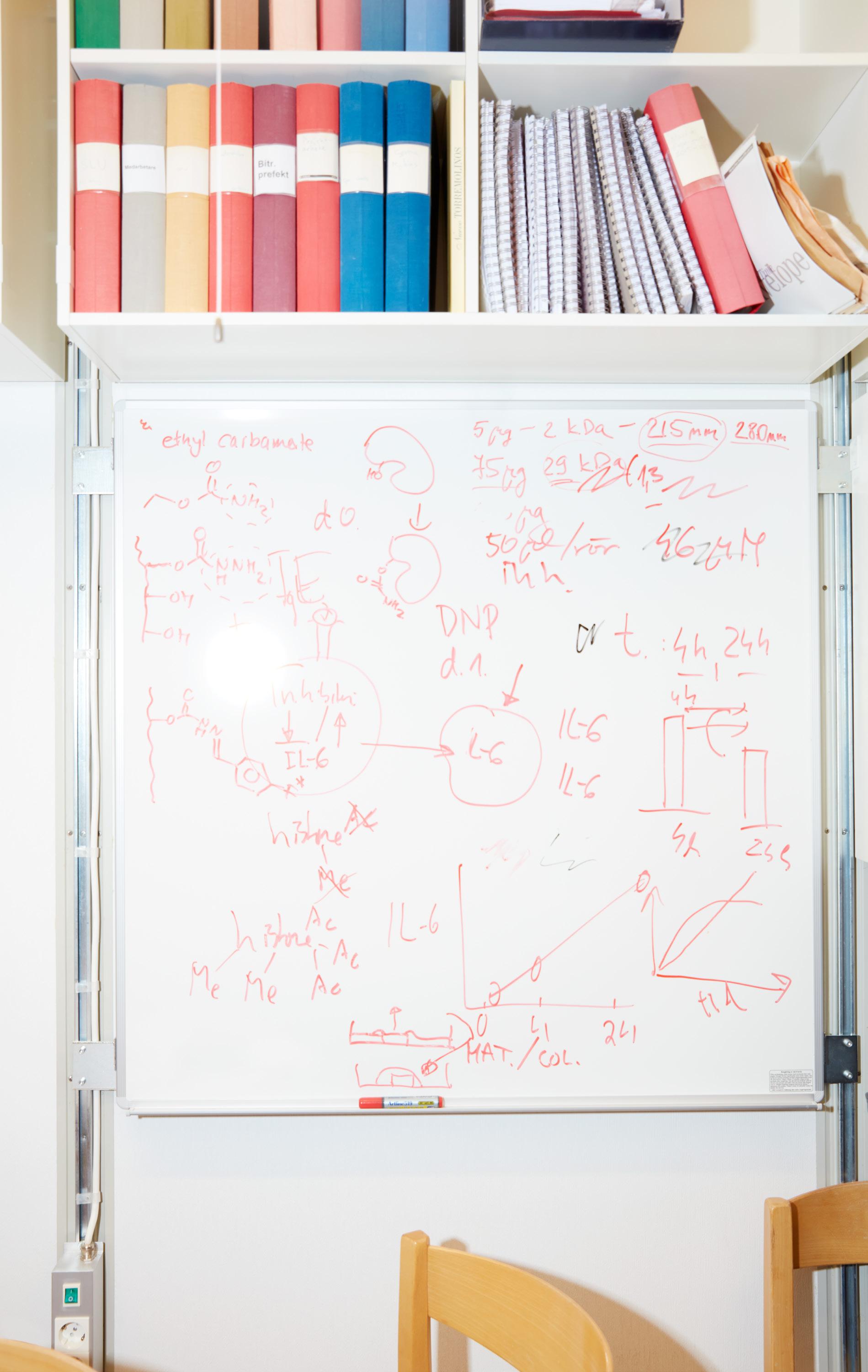
Asthma can be very uncomfortable when the windpipe tightens up and it feels like trying to breathe through a straw. Gunnar Pejler and his colleagues want to find ways to specifically target the cell types that cause the symptoms.
Asthma is a common illness and nearly one in ten adults in Sweden are affected to some degree. Often the asthma is triggered by an allergic reaction. Symptoms of allergic asthma are wheezing and whistling when breathing, pressure across the chest, shortness of breath and the feeling that it is difficult to breathe, as well as coughing. At present asthma is treated with anti-inflammatory drugs and bronchodilators, with multiple drugs being used together if required.
So-called mast cells are one of the cell types behind the symptoms. Gunnar Pejler, a professor at the Institute of Medical Biochemistry and Microbiology at Uppsala University, has been studying these since the mid-1990s.
“As so often within research, it was not planned –rather I ended up focusing on mast cells by chance. I was studying the white blood vessels known as macrophages and thought that they might be able to inhibit blood clotting, but it proved to be the mast cells that had this capacity,” he says.
Mast cells are found in tissues that are close to our external environment: in the skin, eyes, airways and gut. They react by releasing a range of different components, with histamine perhaps the best known. Mast cells are characterised by being stuffed full of small granules, which in turn contain acid fluid. Gunnar Pejler and his colleagues now want to use this characteristic to target mast cells and the similarly acid eosinophils that are also involved in allergic asthma.
In initial trials using two different molecules they were able to get mast cells and eosinophils to undergo what is known as apoptosis, or controlled
cell death. The molecules cause the cells’ granules to release their acid contents inside the cell, after which the cell collapses and dies.
“But the molecules we used had toxic properties, so we needed a better candidate,” says Gunnar Pejler.
They then searched through a library of 1,200 small molecules, all of which are approved drugs. There they found one that looked promising: monensin. This molecule is extracted from a fungus and is used widely within animal husbandry, including as an antibiotic.
“We would have really hit the jackpot if we had found a candidate that was already approved as a drug for humans, but we do not believe that monensin is dangerous to use,” he says.
This needs to be established in toxicology testing, however. The question is then whether there are risks involved in wiping out mast cells. After all, they ought to still have some kind of protective effect – otherwise why would we still have them? Gunnar Pejler says that their role in protection from bacteria or parasites has not been fully demonstrated.
“The way that they degrade in seconds means they are not functionally effective for this kind of slower threat. But there is one occasion when it is urgent, and that is when it comes to protecting us from poison,” he says.
Mast cells have also proved to be able to excrete enzymes which break down snake venom and bee venom.
“This was probably a very important and vital function during human development, but is perhaps
Gunnar Pejler was studying macrophages that he thought might be able to inhibit blood clotting, but it proved to be the mast cells that had this capacity.
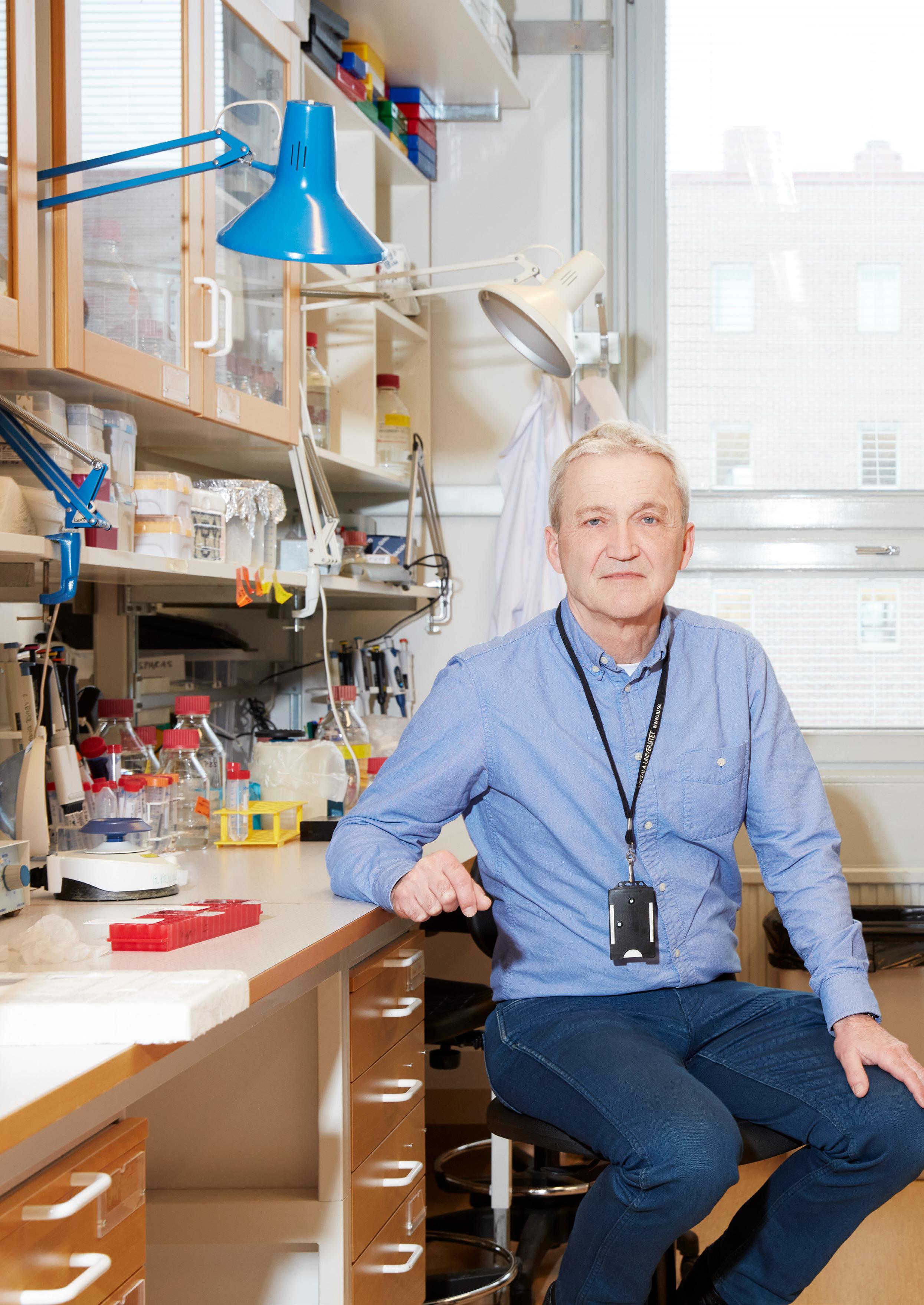
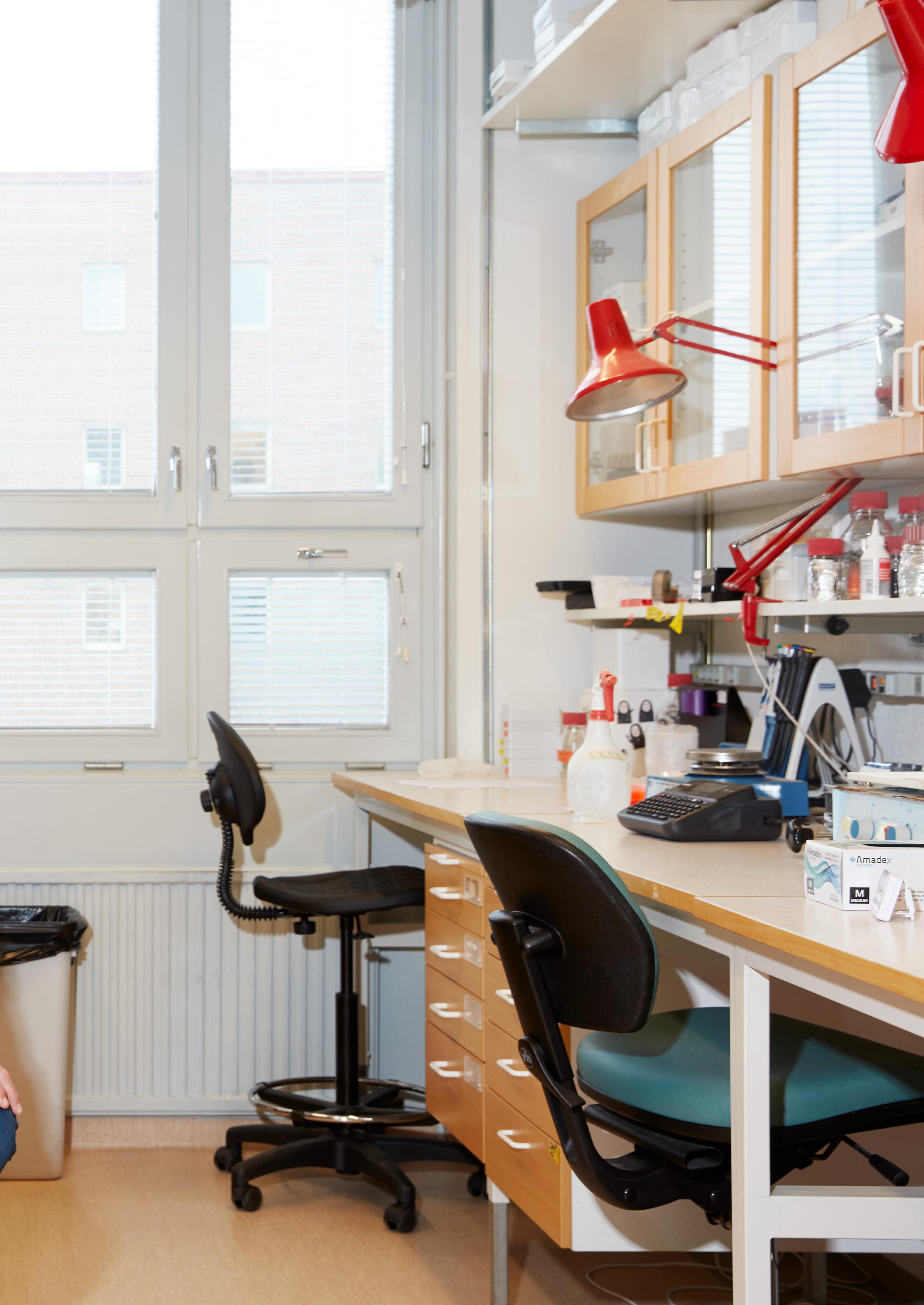
The researchers receive human lung tissue and nasal polyps that have been removed in surgery. From this they will produce mast cells to test their drug candidate on.

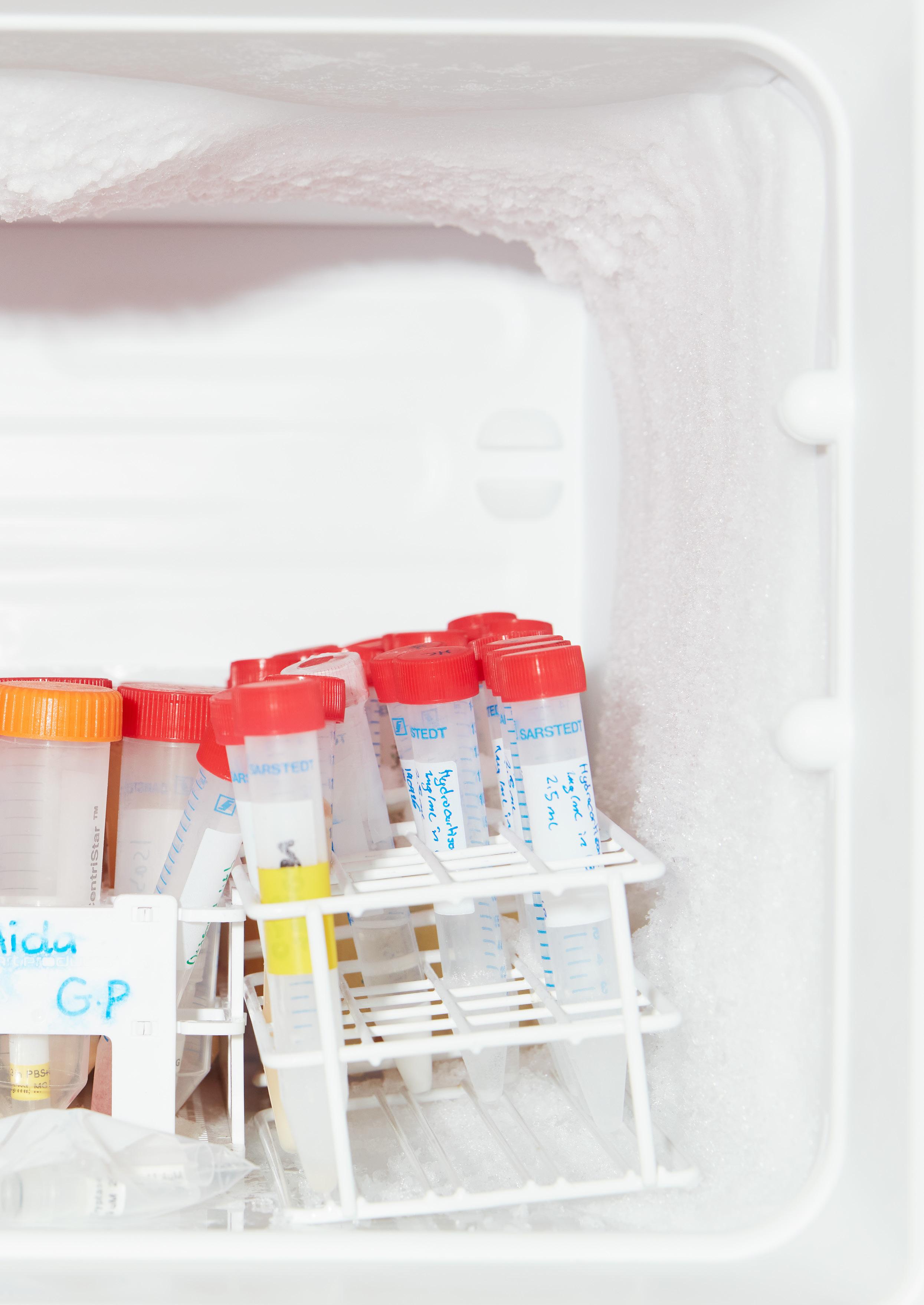
Gunnar Pejler and his team of colleagues have produced lots of data within the project, but further studies are required and the results also need to be published scientifically.

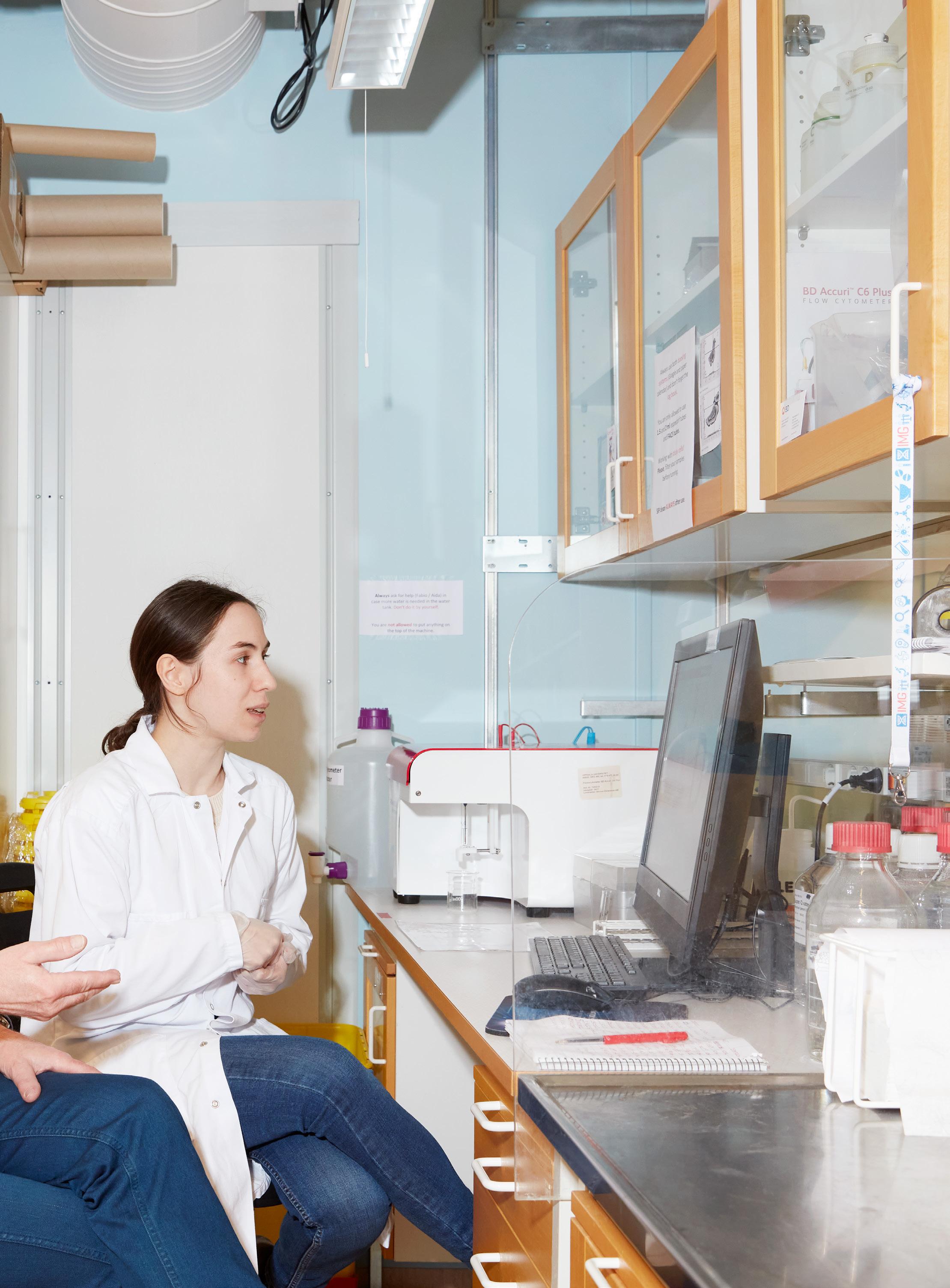
not quite as a fundamental now in Sweden in the 21st century,” he says.
One part of the project A new principle for the treatment of asthma involves producing human mast cells from lung tissue – something that has proved to be difficult.
“We receive material that has been surgically removed in cases of lung cancer, but because these patients are often smokers the material is not usable – even if it sometimes works,” says Gunnar Pejler.
Another source of human mast cells is nasal polyps that have been surgically removed.
“Today we received our first piece and now we will see how well we are able to extract the mast cells and then test our drug candidate on them,” he says.
Gunnar Pejler says that mast cells are robust, while eosinophils are more sensitive. These they extract from blood that they obtain from the blood donor centre. Also in the pipeline are microscopic studies of human lung tissue which is filled with agarose and then sectioned. When the agarose is rinsed away it is possible to study in real time whether the mast cells are sensitive to monensin and exactly what kind of cell death they undergo.
“After all, we want the cell death to be selective and to only affect the mast cells,” he says.
In an animal model mice were given asthma triggered by a mite allergy. The drug candidate will be tested on these to see whether it can alleviate the
8–10
The estimated percentage of Swedes who have asthma.
effect on the airways. Similar trials are taking place in cooperation with colleagues at Karolinska Institutet who are working with guinea pigs, and here monensin is also being tested on human bronchi. The support from the Erling-Persson Foundation is very important, he believes.
“It means we can take the research further and have been able to employ two people to work on it full-time, which would not have been possible otherwise,” says Gunnar Pejler.
The project has given rise to lots of data, but further studies are required and the results also need to be published scientifically.
One question is how any future drug should be delivered. Gunnar Pejler believes that an inhaled maintenance treatment, for example during the pollen season, might be appropriate.
“Of course, it’s difficult to speculate on its future significance for patients – but it’s conceivable that this type of treatment could alleviate the condition in those with severe asthma in particular.”
And he is hopeful for the future.
“Basically, we’ve been able to confirm that monensin works. The next step is to test it on larger animals. Then we need to patent the discoveries and find drug companies to partner with, so that we can eventually carry out a clinical phase 1 study. But it’s a long process and it would be naive to think that – even if everything works – we will have a drug in place earlier than in ten years’ time,” says Gunnar Pejler.
1878
The year in which German researcher Paul Ehrlich discovered the mast cell. The name comes from the German word ’mast’, meaning ’replete’, since it was stuffed full of granules.
1,200
The number of different kinds of small drug molecules in the library screened by the researchers, where they found monensin.
Project manager: Gunnar Pejler, Professor at the Institute of Medical Biochemistry and Microbiology at Uppsala University.
Title: A new principle for the treatment of asthma.
What it involves: Treating allergic asthma based on a new principle. The idea is to wipe out the cells that lie behind it – mast cells and eosinophils – using a small molecule that causes these particular cells to undergo controlled cell death. In the project this is being tested on mast cells and eosinophils from healthy individuals and people with allergies, as well as in small animal studies and potentially on larger animals such as pigs.
Funding: The Erling-Persson Foundation is supporting the project with SEK 2 million for three years, making a total of SEK 6 million.
Per-Olof
Berggren, Karolinska InstitutetSEK 15 M / 2 YEARS
Diabetes is a very common disease that results in great suffering for patients as well as high healthcare costs. It is important to find new, more specific and effective treatment strategies for both type 1 and type 2 diabetes. What makes this particularly difficult is that diabetes is a heterogeneous condition in which each patient is unique in terms of their genetic background, environmental factors and lifestyle. Transplantation of insulin-producing cells is an important treatment method for insulindependent diabetes, but at present only a limited number of patients are benefitting.
One strategy is to use donated pancreatic tissue to cultivate so-called organoids that produce insulin and then transplant these into the patient. The organoids (roughly miniature organs composed of cells and structures, including vessels, as in the full-size organ) are usually transplanted into the liver, but unfortunately have difficulty surviving there for a long period.
Professor Per-Olof Berggren and his colleagues are aiming overall to produce more robust organoids. They start with donated tissue but introduce tissue-specific genetic modifications into the cells in the process of forming the organoids. The genetic modifications are intended to improve the organoids’ survival. Moreover, the miniature organ is transplanted into the anterior chamber of the eye rather than the liver. It has been shown that the organoid survives better in the eye and in addition, drugs that prevent the organoids being destroyed are given only in the eye – thereby avoiding unwelcome side-effects of the drug in the rest of the body.
SEK
25 M / 3 YEARSMagnetic resonance imaging (MRI) creates images of the body through a combination of a strong magnetic field and radio waves. Since
it has no harmful effects on health, MRI is suitable for repeated investigations – important not least in a research context. MRI is contributing unique information in a number of important areas within the field of cardiovascular disease, including heart attack, heart failure, the impact of diabetes on the heart, myocarditis, congenital heart defects and cardiac arrhythmia. MRI provides detailed anatomical and functional information down to a cellular and metabolic level. Overall, this has made MRI indispensable to advanced research and healthcare within the field of cardiovascular medicine. MRI supplements methods such as ultrasound (echocardiography) and CT scans (computer tomography) of the cardiovascular system, and in recent years the use of MRI has increased at the expense of these technologies – a trend that is expected to become even clearer in the near future.
Professor Lars Rydén and his team have received support for updating a MRI camera used in research activities at their MRI centre. These research activities include, for example, studies of: myocardial infarction with normal coronary arteries (MINCA), small vessel disease of the heart, congenital heart defects, diabetes and heart disease, valvular heart disease and heart failure.
Henrik Bjursten, Lund University
SEK 5.5 M / 3 YEARS
In Sweden it is estimated at around 150,000 people are living with valvular heart disease caused by the valves in the heart not fully closing. Symptoms of this condition can include fatigue, shortness of breath, palpitations and dizziness. The most common method for operating on valves is traditional open-heart surgery. This intervention is strenuous for the patient and only 450 patients a year are treated in this way in Sweden for their leaky valves.
Henrik Bjursten is a heart surgeon and a lecturer at Lund University. Together with five partners he has developed an instrument for repairing heart valves without having to go in through the chest. The instrument is introduced
using a catheter that is inserted into a vein in the groin, from where it is guided up to the heart. The project team has designed a number of prototypes of the instrument and preliminary studies indicate that the method seems to work.
Avoiding the strain on the body that openheart surgery involves will make recovery following the intervention easier for the patient, but also means that patients previously considered too frail for treatment or whose symptoms were too mild to justify the more radical intervention may be offered treatment.
Henrik Ahlenius, Lund University
SEK 4 M / 3 YEARS
It has long been known that benign cells can develop into malignant cancer cells, but in recent years new knowledge has also led to the hope that it should be possible to reverse this process. Henrik Ahlenius is Professor of Neurosurgery at Lund University and, in partnership with Johan Bengzon, he has looked more closely at the type of brain tumour known as a glioblastoma. Glioblastoma is a relatively common and highly malignant brain tumour for which treatment has a low success rate, the median survival rate for the standard treatment being around 15 months.
The researchers have shown that a molecular biological method can be used to get a malignant glioma cell to resume the characteristics of a benign brain cell. Now they want to develop the method further, with the aim of eventually being able to offer patients a new kind of treatment.
Hans Hertz, KTH Royal Institute of Technology
SEK 4 M / 2 YEARS
When a solid tumour is removed by surgeons it is important to ensure that as much as possible of the tumour has been taken out, so that the remains of the tumour do not continue to grow after the operation. Often it is difficult for
the surgeon to see with the naked eye the difference between normal tissue and cancerous tissue; in other words, removing a tumour with a margin is a clinical problem. Complete pathological analysis of the tissue removed can take days or even weeks, after which more surgery may be required.
Hans Hertz is Professor of Biomedical Physics at KTH Royal Institute of Technology. He wants to build an X-ray tomography system that in a short time can provide a 3D image of the edge around the removed tumour with sufficient resolution to see individual cells. The system is designed to be portable, so that it can be taken into and out of the operating theatre easily. Good progress has been made and testing of the equipment on tumour tissue has begun, with promising results. The project could lead to great improvements in many areas of cancer surgery.
Rolf Larsson, Uppsala University
SEK 4 M / 3 YEARS
Mebendazole (MBZ) has been used to treat parasitic diseases, but its mechanism of action is sometimes unclear. In recent years Rolf Larsson’s research team at Uppsala University has found that the drug has a number of interesting effects on signalling pathways in the body’s immune system. The team has also shown that the substance has the potential to be effective against certain cancers, which seems to be a consequence of its effect on the immune system. In studies for the treatment of stomach cancer, however, it was discovered that for various reasons MBZ is bad at getting through the gastrointestinal tract and that only small and unpredictable quantities of the drug are biologically active in the body. By chemically modifying the substance it is possible to produce what are known as prodrugs, which not only cope with transport through the body but are also only activated once they are in or close to the target tissue.
Working in partnership with SciLifeLab, Rolf Larsson’s team has now found three drug candidates that are of great interest. Interestingly
enough, it has also been found that the effects are reinforced when the drugs are combined with other cancer drugs that have been used in cases of bowel cancer.
When studies into the treatment of cancer were carried out, a further discovery was made: a patient who was also suffering from an autoimmune disease became unexpectedly free of their symptoms. With knowledge concerning the signalling pathways identified previously as an MBZ target, the team realised that they could be onto an important effect. A parallel study is now investigating whether MBZ could be used for autoimmune conditions.
Ersta sjukhus, Anders Thorell
SEK 14.25 M / 3 YEARS
Modern healthcare is characterised by continual development and expansion, which brings both the opportunity to treat new categories of patients as well as alternative treatment methods that can be offered to patients within current diagnostic groups. In most cases this gives rise to an increased need for resources, despite the fact that many of the new treatment methods that are taken into use are often insufficiently evaluated or have not been evaluated at all. This in turn involves a great risk that limited available resources are not being utilised in the best way.
Ersta sjukhus is a hospital providing elective (non-urgent) medical and surgical care within gastroenterology. Its surgical department carries out very large volumes of operations every year in areas such as colorectal cancer, obesity, gallbladder and biliary tract conditions, hernias and oesophagal/stomach conditions. With high volumes of patients undergoing planned interventions – without the operations being disrupted by emergency work – it provides a unique opportunity to conduct patient-oriented research of high quality.
Patient-oriented research at Ersta sjukhus is led by Professor Anders Thorell. Firmly established within everyday clinical care, these activities are one of the most application-oriented areas of research that the Erling-Persson Foundation supports.
Kinondo Kwetu Hospital
SEK 2 M / 1 YEAR
Kinondo Kwetu Hospital is situated south of Mombasa in Kenya. Over the past 15 years or so it has developed from a small cottage hospital into a full-scale hospital offering a wide range of healthcare interventions. In the past year two modern operating theatres have been taken into use; among many other things, this has markedly improved the chances of mothers and children surviving complicated births. Covering a wide range of public health concerns, they are working to reduce all diseases that can be prevented and/or treated but that are often neglected in low- and medium-income societies.
The hospital is an important part of the infrastructure for research into remote medicine and AI-assisted medicine that is supported by the Erling-Persson Foundation. Female patients participating in the programmes being run at the Comprehensive Care Clinic (where patients with HIV and tuberculosis get help with medication, nutritional advice and socioeconomic matters, among other things) are also given opportunity to take part in screening programmes for cervical cancer that are being run by the researchers using AI technology. Countries in sub-Saharan Africa have the highest incidence of cervical cancer in the world, and women
with HIV are particularly vulnerable. The study has demonstrated good results and has now reached a stage where it is time to offer screening to a wider group of women.

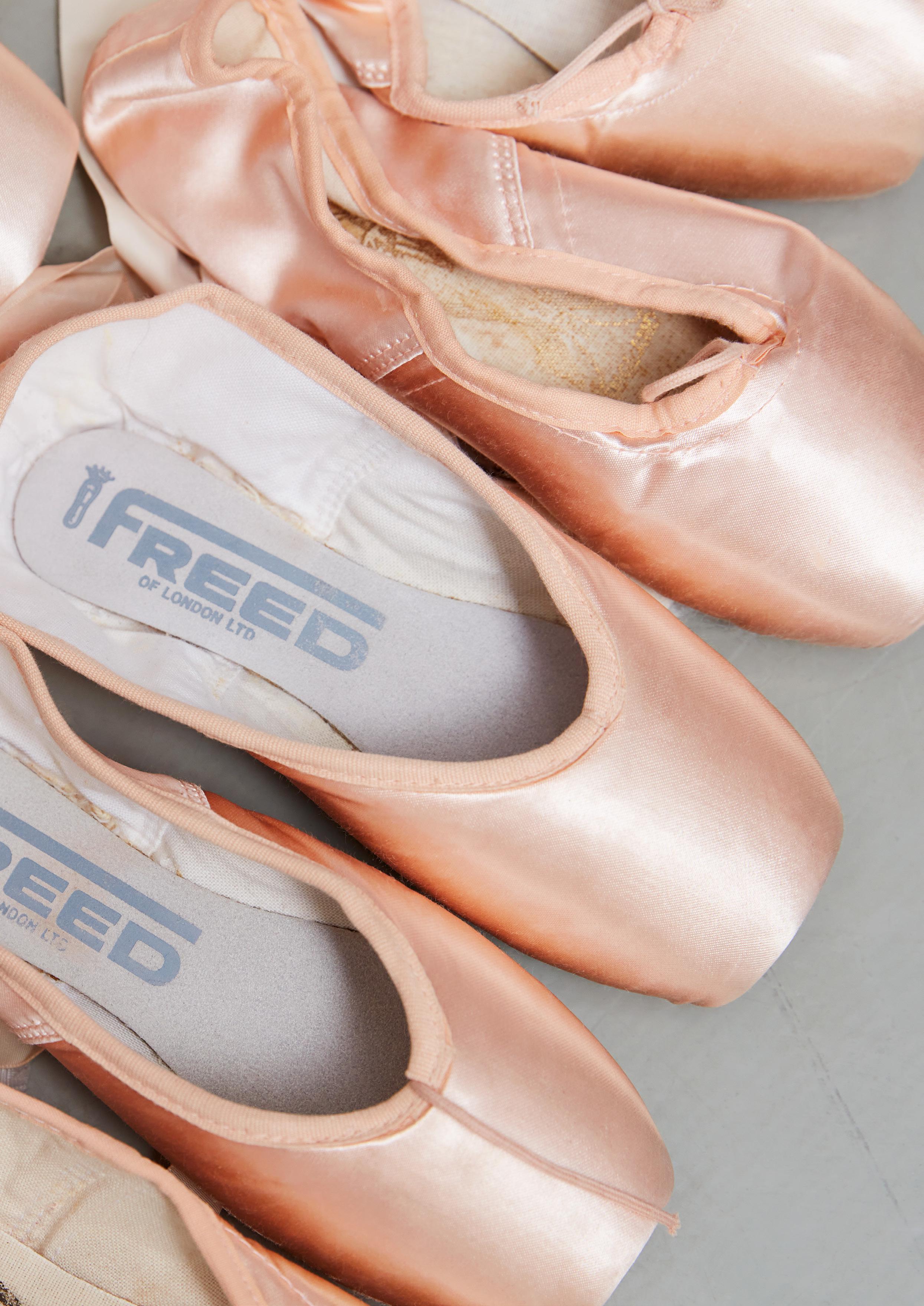

This year the Royal Swedish Opera celebrates its 250th anniversary with a jubilee year in Stockholm. It was founded by King Gustav III, who the same year also started the Royal Swedish Ballet, explains Karin Forslind, director of operations at Alhanko Academy of Ballet and a dancer herself.
“We have a long tradition – but we are also a long way up in the north, so we have to work to attract, train and retain our dancers,” she says.
Mia Stagh, artistic director and a ballerina herself, tells us the background to the academy being formed. She and prima ballerina Anneli Alhanko had children in ballet school, and met at the children’s dance performances.
“Other parents would often come up to us and say to Anneli Alhanko ’you were so amazing, can’t you start a new ballet school?’ – so eventually we did,” she says.
Their first batch of pupils – before the professional school began – consisted of 10 dancers, five of whom were successful in auditions for the Royal Swedish Ballet School in Year 4.
“That was when we realised we had a really good school going. When Karin Forslind joined we started to take things seriously, and in 2015 we created a new vocational syllabus that also included character dance, jazz and everything,” she says.
Today around 30 pupils in Years 4 to 9 attend the school each year, having been accepted following an audition in Years 4 and 5. The school’s activities are personnel-intensive since the pupils dance five or six days a week (including on Saturdays once they reach Years 6 to 9). You need to give clear tactile
guidance in the studio to enable the pupils to find their muscles, explains Mia Stagh.
“We’re proud that our injuries are so few, but we work in a very anatomical way. We never force a movement. Instead, at the start we begin very much from the floor, with the pupils getting to know their own musculature first,” she says.
Mia Stagh highlights the role of the pupils and the importance of them finding the solution themselves.
“I stopped a lesson the other day and asked ’Why are you still rolling your feet? What else do I need to say so that you understand?’ And then they came up with the solution,” she says, continuing:
“When they figure it out themselves it stays with them, but I’m there to coax the answer out of them.”
Karin Forslind agrees and also mentions the effort required.
“Those who choose our school are giving up a lot of other things. You can’t play football five days a week or sit on your phone for hours – quite simply, it demands a huge amount of time and commitment,” she says.
Although the school started relatively recently with few pupils, Mia Stagh says it has already attracted international attention. She believes dance competitions benefit not just those who get to go, but also raises the level of those who stay at home.
Their first pupil was 11 years old when she took part in the Youth America Grand Prix, classical ballet’s equivalent of the Olympic Games. Every year 10,000 dancers between the ages of 10 and 19 take part in local auditions, with the best 400 then competing in New York.
Classical ballet has an impressive 250-year tradition in Sweden. Alhanko Academy of Ballet wants to give young people the chance to grow as people and as dancers through high-quality modern tuition.
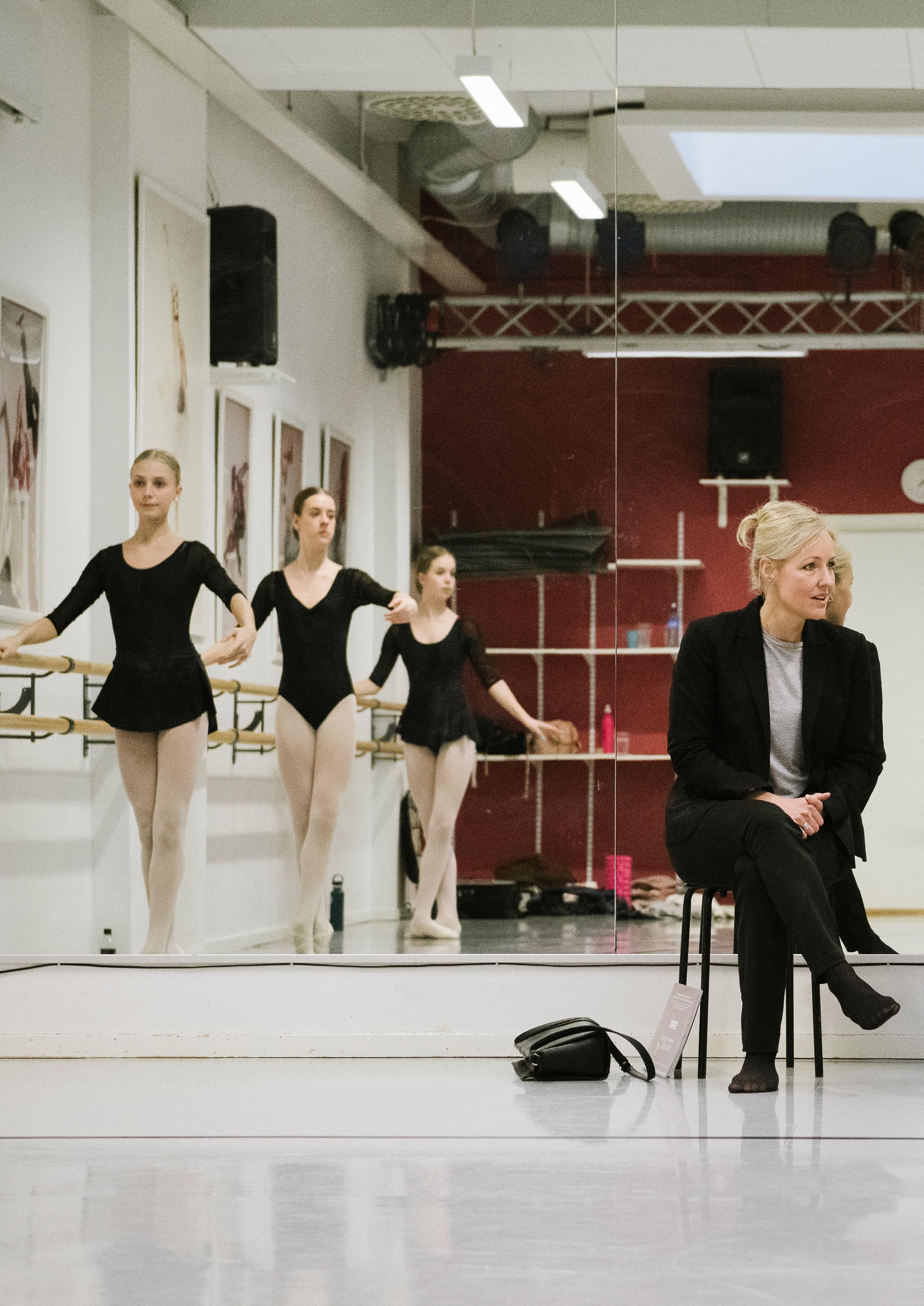 Ylva Linderson, Mia Stagh and Karin Forslind in the dance studio at Base 23.
Ylva Linderson, Mia Stagh and Karin Forslind in the dance studio at Base 23.


“Our Evelina went off to New York! It’s absolutely amazing that our tiny little private school was able to compete there under the Swedish flag. Now we’re invited to the European auditions every year,” says Karin Forslind.
Something that they both highlight is the importance of retaining contact with former pupils. Today that very Evelina is working in Leipzig, where she is to dance the principal role in a new premiere of The Little Prince.
“I’ve just been there and said hello to her – she was extremely excited, and at the same time exhausted after the new choreography,” says Mia Stagh.
They both act as mentors to former pupils, who tend to stay in contact even though most of them are now working abroad.
“They come here and tell current pupils what it’s like out in the real world, and those who want to teach help out as a holiday cover,” says Mia Stagh, adding:
“As we say: once an AAB dancer – always an AAB dancer!”
Karin Forslind says that at present the school’s termly fees are considerably lower than is usual for private dance schools.
“Our fees are lower because we do not want people to be excluded from dance for financial reasons,” she says.
In 2019 they contacted the Erling-Persson Foundation and were awarded a grant in 2020.
“We were so happy! Otherwise we wouldn’t have been able to continue without raising the fees, which would have resulted in us having no pupils. Quite simply, without the support we wouldn’t still
80–90
The percentage of pupils at Alhanko Academy of Ballet accepted for various vocational dance courses after Year 9, in Sweden and particularly abroad.
be here,” says Karin Forslind.
Mia Stagh adds that the support is spent on its core activities – above all, having teachers in the studio for every lesson, every day.
“We’re very careful about our costs. ’Shall we buy a new costume for the performance? No, we can adapt the one we’ve got’,” she quotes as an example.
One conceivable improvement that might come about in the future is to have more international guests participating.
“We have our own network of contacts, which means that our pupils have been able to meet some of the most skilled coaches in the world who drop by when they’re in Sweden. But in the best of worlds it would be great to be able to actively invite guest teachers – for example, to pass on a particular technique to our pupils,” says Karin Forslind.
“Or to be able to invite an international choreographer, as there’s a lot happening in that area,” says Mia Stagh, adding:
“Or even perhaps if someone were to create a piece especially for our pupils!”
Karin Forslind concludes by summing up the driving force behind Alhanko Academy of Ballet:
“We want to prepare the next generation in order to keep classical dance alive – in an up-to-date, healthy, contemporary way. We want to bring with us everything that was good, but leave behind what was not so good,” she says, continuing:
“There needs to be a place for young people who are passionate about ballet!”
And Mia Stagh adds:
“This is what we love, and we want to share it.”
32–36
The number of pupils in Years 4 to 9 who are taught classical ballet at the school each year.
1773
The year in which King Gustav III founded the Royal Swedish Opera and the Royal Swedish Ballet. The ballet was initially a part of the opera, but was then given its own repertoire. Today the company has 68 members.
Recipient: Alhanko Academy of Ballet.
Who: Director of operations Karin Forslind, artistic director Mia Stagh.
What it involves: Running a high-quality classical ballet school for children in Years 4 to 9.
Funding: The Erling-Persson Foundation is supporting the project with SEK 7.5 million over the years 2020–2025.
One in four pupils in Year 9 do not succeed in passing Sweden’s national tests in mathematics. Daniel Carlsson, one of the founders behind Mattecoach på nätet (Maths Coach Online), wants to change that – as its local operations are now scaled up to become national.
Maths Coach Online started in 2009 on a small scale, but has grown over the years and now encompasses a UK university as well as Linköping University, KTH Royal Institute of Technology in Stockholm and Chalmers University of Technology in Gothenburg.
“Our seats of learning have a good reputation and in Sweden we have a presence in three of the country’s four metropolitan regions,” says director of operations Daniel Carlsson, an assistant lecturer in the Department of Mathematics at Linköping University.
Maths Coach Online is a service that helps primary and secondary school pupils with maths assignments that they are stuck on. The help is provided by trained coaches who are training to be maths teachers at secondary school or engineers.
Daniel Carlsson says there is a great need for this, because 15 to 20 percent of Year 9 students do not succeed in passing the Swedish national test in mathematics.
“If a fifth are not even getting a pass, that probably means that a number of others are also finding it hard to study at home ahead of tests and lessons – perhaps because their parents are not able to help them with it. I estimate that around 40 percent of pupils need some kind of support,” he says, adding:
“And then you have those school students who are good at maths, but who do not always get that much time in the classroom. With us, they get to ask their questions too.”
When contacting Maths Coach Online the students can stay anonymous, with many using an alias such as Queen of Math or Captain Euler. Communication takes place via chat and a shared drawing
interface. One advantage of this is that it takes away the relationship that is otherwise created in a video call, where people worry about how they look or sound.
“Yesterday one of our coaches told me that they like the fact there is no video or sound because it shifts the focus onto the maths question itself, in a neutral way,” says Daniel Carlsson.
The coaches are trained to use a three-step model in the chat, since a fundamental part of understanding mathematics is being given the chance to think for yourself.
“The pupil needs to take their own route through the process of solving the problem to get to the answer. As coaches we must not jump in and show them the way, but instead be there to support them as needed,” he says.
The first phase is to establish who the pupil is, how far they have got in their understanding and what the question concerns. The second phase involves coaching the pupil through their way of solving the problem, as described above. The third phase involves following up with questions such as: What were the important steps we took? If you were to switch out this number, what would the answer be then? What do you need to remember if you get a similar question in the test?
“The follow-up is about ensuring that the pupil has understood the solution. That’s because we know that if you simply ask ’Did you understand that?’ the pupil will generally answer yes, because they feel that they have been given help and they want to be nice back,” says Daniel Carlsson.

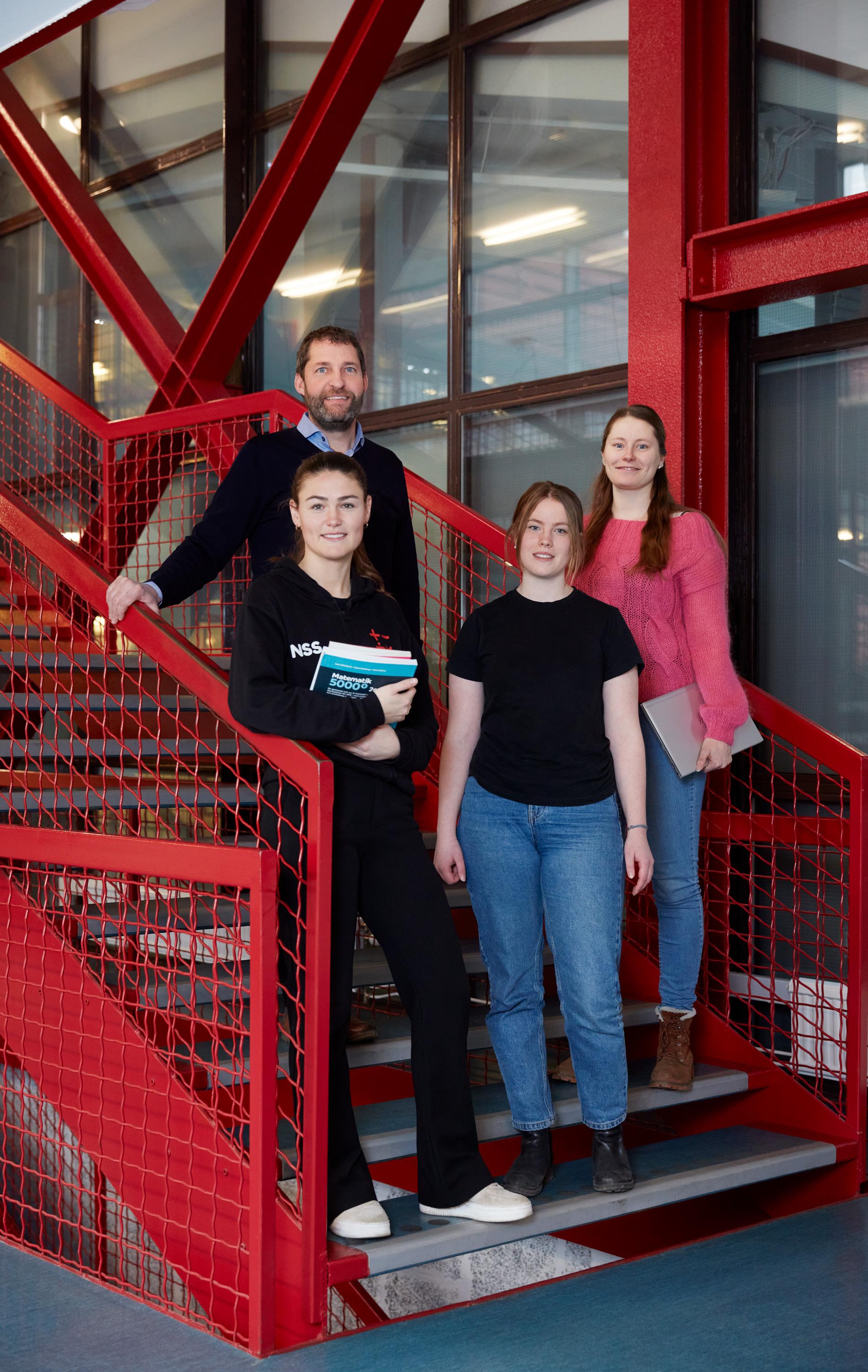

In user surveys school students who have used the service can provide feedback in their own words. One of them wrote: “I’m really happy! The descriptions were good and because they described how to go about it rather than working out the answers for me, I learned a lot.”
As well as supporting school students, Maths Coach has two further aims that are to some extent related. One is to help the coaches train in digital learning, and the other is to contribute to research within digital learning. The future maths teachers confirm that it is developing their skills both in teaching and in their subject.
The research consists of describing, explaining and understanding web-based one-to-one teaching as well as developing platforms that support this teaching in the best way.
Today eight municipalities have joined up and each year the coaches help 4,000 students, but there is even greater interest than this. They have chats with individual students in 125 other municipalities who they help if they have time.
Daniel Carlsson says that the support from the Erling-Persson Foundation means “everything!”, because it allows the operations to be scaled up.
“Thanks to the Foundation being involved, we will be able to offer the service to the municipalities free of charge – providing pupils throughout the country with the same conditions. I hope that in future we will be able to help 10,000 to 15,000 pupils per year with their questions,” he says, continuing:
“We’ll also be able to develop more secondary school teachers’ skills in online teaching.”
17
The percentage of Year 9 pupils in municipal schools who do not achieve a pass in mathematics in national tests, according to the Swedish National Agency for Education.
Since being notified of the support, around 30 new coaches have been trained.
So how much maths do you need to be able to function in society? Daniel Carlsson believes there have been rapid developments in working life over the past century or so, with monotonous physical work being increasingly taken over by machines.
“Previously there were lots of jobs that did not require much education, but today people are expected to be able to read development plans and understand staff planning and all that it involves,” he says.
He calls mathematics “a cognitive gym” in which you work out to improve your skills in such things as following reasoning, solving problems and comparing different methods.
“It’s rarely about the details, but rather learning how to approach a problem – which doesn’t actually have to involve mathematics at all,” says Daniel Carlsson.
In his experience, there are no hopeless cases; everyone can learn maths, in a process that is similar to learning a new language.
“It’s about symbols that have to be put together in certain ways, and what we call calculation rules are the grammar of the language of maths. But clearly some people find it easier than others,” he says.
Daniel Carlsson remembers back to 2011 when the business started up and a pupil in Katrineholm wrote the happy comment: “For the first time, I now understand!”
“That is what we want Maths Coach to be – so that people won’t have to sit at home getting stuck. Instead we’ll be there to provide help, support and hope!”
40
The number of minutes that an average chat with Maths Coach Online lasts for.
15,000
The number of students that Maths Coach Online hopes to be able to help each year going forward.
The business has a head of operations at each hub: Daniel Carlsson of the Department of Mathematics at Linköping University, Dorotea Blank of the Schools Partnership unit at Chalmers University of Technology and Malin Jansson of the Digital Learning unit at KTH Royal Institute of Technology.
Title: Maths Coach Online.
What it involves: The project aims to help school students understand mathematics, to train future maths teachers and engineers in digital learning and to provide a basis for research into online learning.
Funding: The Erling-Persson Foundation is supporting the project with a total of SEK 8 million over two years.
SEK 600 M / 7 YEARS
The Nobel Center will be a gathering place for Nobel Prize laureates, Stockholm residents and tourists as well as students and their teachers. The ambition is that all schoolchildren in Sweden will visit the Nobel Center at some point during their school years. Teachers will be offered lesson materials and continuing education courses. There will also be an extensive programme of activities and exhibitions based on the laureates, their discoveries and their works.
A taster of what is to come was provided in autumn 2022 when the Nobel Prize Museum opened the exhibition Life Eternal at Liljevalchs art gallery in Stockholm. The entire area that otherwise accommodates the Spring Fair was home to an exhibition bringing together science, art and cultural history to show different approaches to eternity.
“The Nobel Center will offer people both in Sweden and internationally a place for knowledge, inspiration and exciting encounters. The Nobel Prize is famous throughout the world and shows the importance of science, culture and peace efforts as drivers for positive development in the world. The Nobel Center will make all these available to a wider audience, and for us at the Erling-Persson Foundation it therefore feels important to join with the Knut and Alice Wallenberg Foundation in contributing to this initiative,” says Stefan Persson, chair of the Erling-Persson Foundation.
If all goes according to plan the new Nobel Center will be completed at Slussen in Stockholm in 2028.
Umeå Biotech Incubator
SEK 6 M / 3 YEARS
Of an estimated 30,000 known diseases, there are currently only treatments for 10,000. Many of these treatments need to be developed and improved. In addition, better tools and methods of diagnosis are needed for many diseases. The research being conducted within our universities is looking for solutions to these problems,
but for the research to benefit humankind the results need to be developed from research into products on the market.
The Umeå Biotech Incubator (UBI) has become the best in Europe at helping researchers with this transformation. Through UBI’s programmes, researchers learn to evaluate and test their ideas in a process aimed at rooting out and refining the best solutions to the problems identified by research.


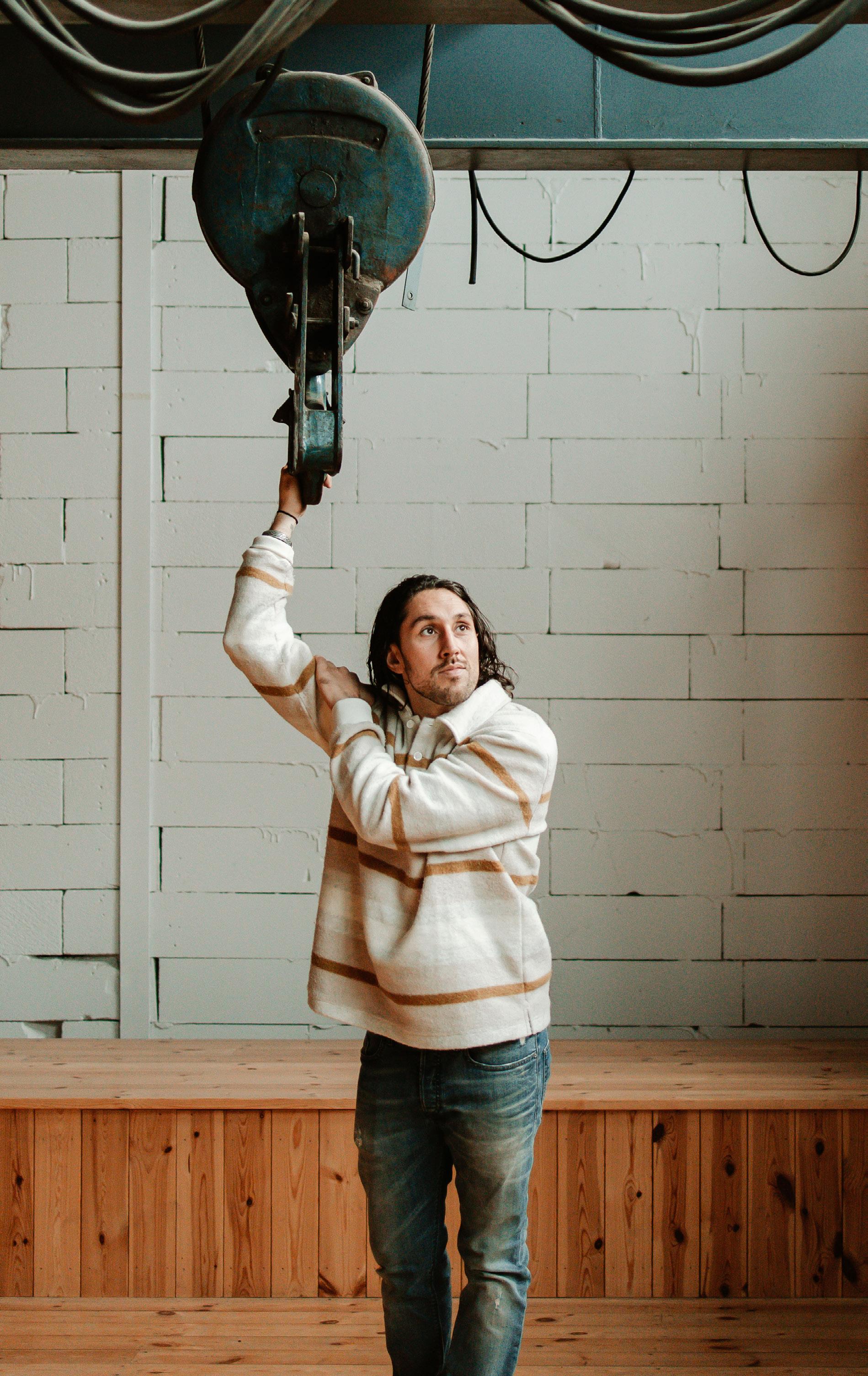
At present there is a disconnect between creative ideas and their potential market. At Värmeverket in the Stockholm suburb of Bredäng young people will be given the chance to enrol on a ’Creative Foundation Year’ and also to test their solutions in the market as part of a grant-financed programme.
Many people can attest that Sweden has a growing problem of exclusion and of young people who are on fringes of society. Leo Razzak, head of operations at Värmeverket in Bredäng, has the numbers: nearly nine in ten school students do not feel motivated by their teachers, according to a schools survey carried out in 2022.
Adult support is important for young people’s wellbeing and development, but this requires resources.
“I’m a product of social investment myself,” says Leo Razzak.
“Think of Värmeverket as the child that would result if Fryshuset were to date the Swedish Institute of Dramatic Art!”
As a teenager he was in the risk zone, but at 17 years old he came to non-profit organisation Fryshuset to take part in a project against honour-based violence. There he met sensible adults and became involved himself.
“One of those I met was Arhe. He celebrated his 70th birthday last week and this evening we’re going out to dinner,” he says.
Leo Razzak got himself an education and worked within the creative industries of film and television. In 2017 he was assistant director to Felix Herngren and came across Värmeverket, a closeddown heating plant in Bredäng that they used as offices during a TV recording. Leo Razzak felt that
this shabby brick building could become a place to work creatively with others.
“Think of Värmeverket as the child that would result if Fryshuset were to date the Swedish Institute of Dramatic Art!”
In 2018 he and a colleague began renting the rundown rat-infested property at their own expense. In May that year Leo Razzak also received a private grant from the Persson family to build up the foundation. Over time they equipped the premises and developed an enterprise aimed at young people. In May 2020 a fire at Slättgårdsskolan school in Bredäng left pupils in Years 7 to 9 with nothing structured to occupy them. Leo Razzak describes how the pupils started their summer holidays a month early – with the result that things soon got messy in the centre of suburban Bredäng...
“So as a social initiative we stayed open around the clock for 50 days. We offered breakfast and lunch, and arranged workshops and courses for people to try out different things,” he says.
As time went on, renting the 4,000 square metre building became financially unsustainable – so in 2021 he decided to buy it.
“We wanted to have a plan that was sustainable long-term and to ’repurpose’ the property by adapting it to today’s needs,” he says.
He explains that when he was working with Fryshuset as a teenager there was a vision to create Fryshuset branches in more places than just Stockholm, and that at that time the activities received financial support from the Erling-Persson Foundation. This gave him the idea of turning to them again.
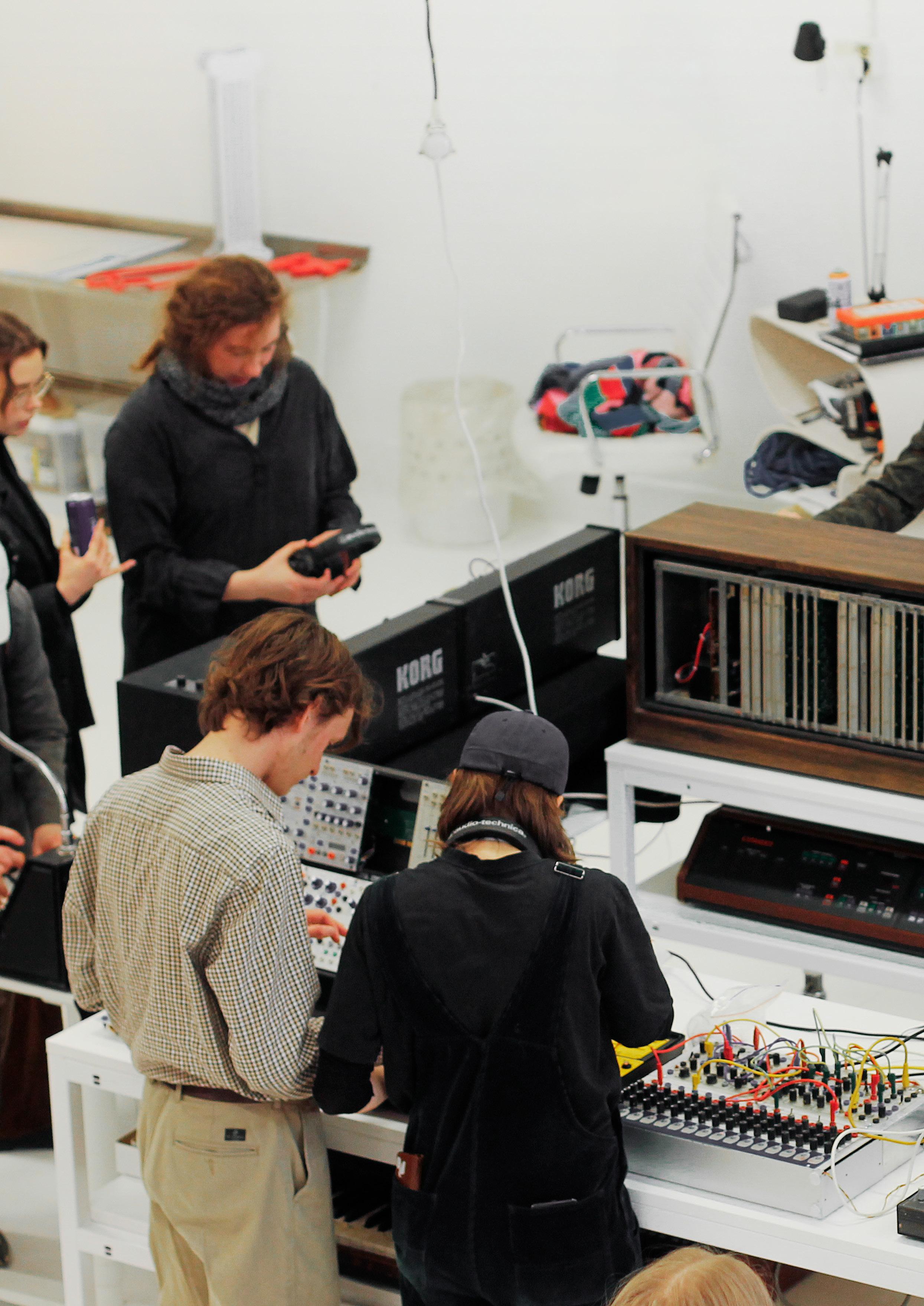

“I envisaged that we could build an enterprise with five employees and invest right here in the young people who live here in Bredäng,” he says.
Leo Razzak highlights three questions that need to be answered as well as two tracks that the enterprise will run.
in designing a creative foundation year.”
One of the questions concerns what the workplace of the future will look like – not least with the repercussions of the coronavirus, with more and more people abandoning the traditional office. Another question involves looking at society and how cultural resources are distributed. But the most important question is what happens if you actively invest in creative people.
“There’s such a difference at the moment. If you have a tech idea, there are ready-made incubators and various ways to work on the idea. But if you have a film script, you’re lucky if it gets picked up – even though we could be talking about tens of millions of dollars,” says Leo Razzak, continuing:
“And if the idea is copyrighted, it’s protected for 70 years after your death and the royalties can roll in.”
This is where the two tracks come into the picture, the first of which involves education and training.
“Many of my mates were going off the rails, but then they did a technical foundation year which got them back on their feet. We’re interested in designing a creative foundation year,” he says.
Young people would then get to try out a number of different creative activities at higher and higher levels in the form of introductory courses, exploratory courses and expert courses.
“Our final goal is to become so good that we get licensed to run the course, so that those who study can receive a tuition grant and we get paid,” he says.
They are currently in talks with various schools and colleges, such as the board of Nyckelviksskolan.
“They want to have people from around here on their courses, but are finding it difficult to get them – and people here don’t even know that they exist,” says Leo Razzak.
Other possible partners are Konstfack, Beckmans and Forsbergs. He stresses that they are in
the process of determining which elements will be included, but expect to start on a small scale in August. They have an ambitious vision for the coming three years.
“We are aiming for 340 places per year, with evening classes and a few other courses supplementing the creative foundation year,” he says.
The second track is an investment fund that has already started its activities. In a three-stage system, young people get to test their idea and take steps towards launching it as a product. In the first stage they receive SEK 1,000 to design a prototype. If that goes well, in the second stage they get to spend three months at Värmeverket and get help from its resources to reach out – along with a maximum of SEK 50,000.
“There were three girls who wanted to launch a water bottle that would be sold to raise money for vulnerable children, and we helped them to make some promotional videos,” says Leo Razzak.
If the idea reaches the market, in the final stage the creative gets assistance with forming a limited company, signing contracts and making external contacts. He stresses that not every idea will be successful.
“They say that if one in ten comes off, then you’re doing well. Our ambition is for one in five. If just one of them becomes really big – a song from our studio becoming a global hit, for example – it will sustain all the others,” he says.
“They say that if one in ten comes off, then you’re doing well. Our ambition is for one in five. If just one of them becomes really big, it will sustain all the others.”
The course and the fund have names connected to Värmeverket’s former function as a power station: Power Up and Powered By. The Erling-Persson Foundation has awarded a one-year grant of SEK 15 million to enable Värmeverket to establish these two activities.
“It’s a large sum of money, but you have to see it in perspective,” says Leo Razzak, and gives an example: Economist Ingvar Nilsson calculates costs and benefits to society, and has estimated that a gang criminal costs society SEK 25 million in the course of their career – for example, in the form of compensation and legal costs. A young girl who is self-harming and needs a place in a residential care home for three years does indeed become well, but getting her there costs society SEK 10 million.
“Many of my mates were going off the rails, but then did a technical foundation year which got them back on their feet. We’re interested
“I have undoubtedly stopped between five and ten people from ending up like this. But unfortunately at the same time we’ve lost 30 people because we didn’t have the resources and the organisation to meet the need,” he says.
When Leo Razzak found out that Värmeverket’s application had been approved he felt elated and terrified at the same time, he says.
“It gave us the opportunity to put our ideas into
practice, but at the same time there was a huge feeling of responsibility – it feels extremely important to live up to expectations,” he says, continuing:
“And I’d like to take this opportunity to say a big thank you to the board for choosing to believe in us and in something that is innovative – because that’s how you find out if new ideas can fly. So kudos to the board for daring to do so, and kudos to us for wanting to do it!”
The percentage of young people in Bredäng who felt they received no support from teachers and also feel there is no cultural offering for them, according to the schools survey conducted in 2022.
Värmeverket is to be 50 percent non-profit and focused on creatives, and 50 percent commercial – such as hiring out premises for recording promotional videos.
The aim for the year is for 100 people to complete the Power Up course and for 15 creatives to be part of the Powered By programme.
Title: Värmeverket
What it involves: A meeting place in Bredäng for young creatives. The project involves designing and running a “Creative Foundation Year” called Power Up. In addition, it will operate an investment fund that provides grants for young people to test out their creative ideas in a three-stage programme called Powered By.
Who: Director of operations Leo Razzak and a further five employees.
Funding: The Erling-Persson Foundation is supporting the project with SEK 15 million for one year.
Right now there is a mismatch between the world of school and working life – and it is young people from disadvantaged areas who are missing out the most. Lampan – “The Lamp” – is a project initiated by non-profit organisation Fryshuset which hopes to mitigate this by specifically helping young people to find employment.
For some young people, the path from school to working life is neither straight nor simple. According to a 2018 report from the Swedish Children’s Ombudsman, for example, four in ten early teenage boys living in the suburbs expected to find it difficult to get work. The 2019 unemployment report from Akademikernas A-kassa – an unemployment insurance fund for university graduates – also describes a mismatch in the labour market: many people not in employment have no qualifications from upper secondary school, while employers are seeking increasingly well-qualified workers. The Lampan project, organised by Fryshuset, focuses on the path for young people from school to working life.
“The Lampan project is special because it started during the pandemic, when a broad group of young people were at risk of ending up not in employment, education or training. Many had found it difficult to keep up with online learning at upper secondary school, and in addition all the entry level jobs disappeared at a stroke,” says Katarina Nilsson, national project lead for working life and entrepreneurship.
As part of the project a digital careers guidance centre that is available across the country has been created. The idea is to bridge the gap that can exist between efforts by careers advisors at school and the labour market.
“We wanted to solve the urgent problems brought about by the pandemic, so that young people would get to meet a careers advisor if they needed to or quickly get help with registering with
the adult education service to catch up on the maths that they missed,” she says.
Johan Oljeqvist, Fryshuset’s CEO, adds some detail:
“And we quickly decided that we would be open to anyone who wanted to come – from those who had experienced only minor problems with teaching being online to young people who are socially excluded,” he says.
They started the project without knowing when the pandemic would release its grip – and so had to set up digital solutions, explains Katarina Nilsson.
“We also went out into the schoolyards at upper secondary schools to provide information about what we were doing. As time has gone on, we’ve begun using physical meetings. We are constantly evaluating our activities. When it comes to meeting with a careers advisor, digital meetings work well for most people – except for those we meet who have the least trust in society. Then you need to meet in the same room, so that you can see people’s body language,” she says.
One thing that has worked well is the 60 or so inspirational talks that have been organised, where individuals that young people can identify with talk about their journey into their career or to the position they have today.
“This kind of storytelling really speaks to young people. For example, it might be a girl with a foreign background who has established a position for herself within the tech industry and her route there,” she says.
Once the project had been running for 22 of its total 30 months they compiled the results: more
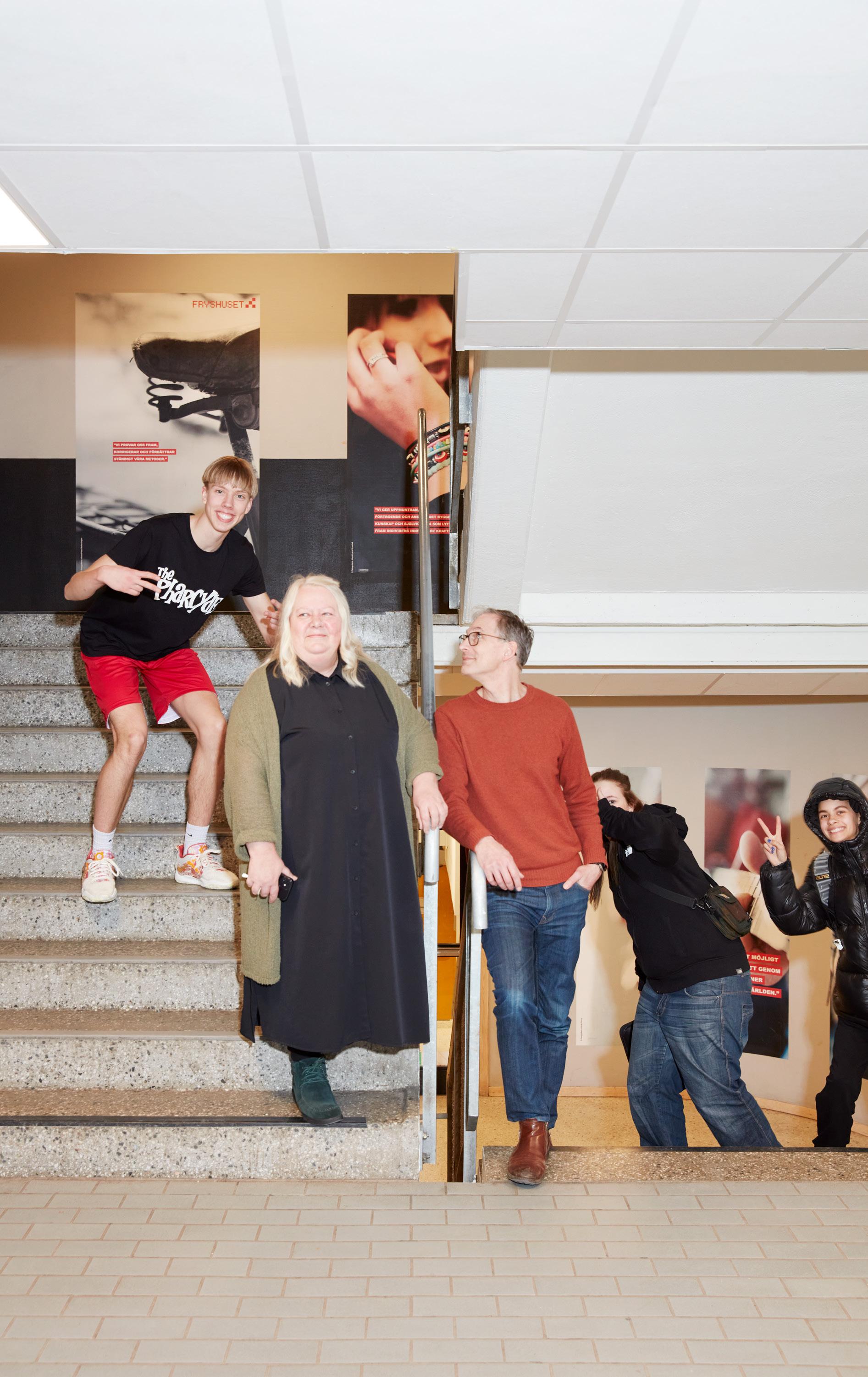
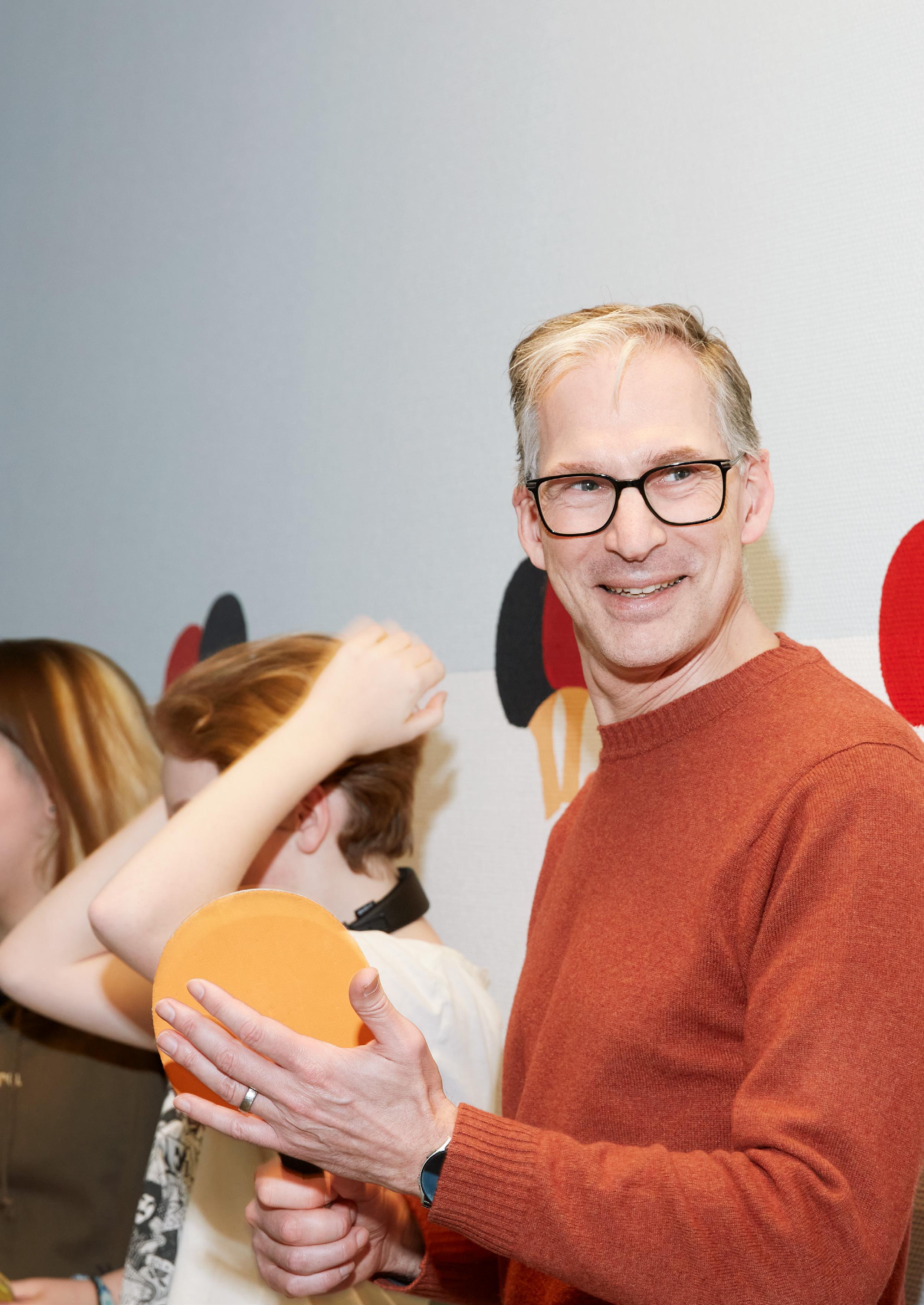 Fryshuset quickly decided to be open to anyone who wanted to come during the pandemic, explains Johan Oljeqvist.
Fryshuset quickly decided to be open to anyone who wanted to come during the pandemic, explains Johan Oljeqvist.

“We already knew that when times are hard, such as when there is a pandemic or a recession, two or three year-groups of young people are at risk of ending up excluded. Without the Lampan project they would not have been exposed to the opportunities that are actually out there.”
than 4,300 young people had met with a mentor or a careers advisor, and just over one in ten had subsequently enrolled for further studies. More than 21,000 hours had been spent on education, coaching and practical activities with young people. And 112 young people outside the system – “young people not in education, employment or training” –had received guidance. Just over 2,400 young people had drawn up a functional CV and 173 study visits to industry had been carried out.
road trip bingo or who knows what,” says Katarina Nilsson, continuing:
“In both these cases the Lampan project has provided substance for the next project application, with young people creating their own jobs and with entrepreneurship as an important factor. In a job market where ’permanent employment’ doesn’t mean the same as it did for my generation, and where contract work and the gig economy are the norm, young people need to identify their own entrepreneurial abilities if they are to find the best way through.”
The Lampan project has now been going for two years.
“We’ve learned what we need to do and how, notwithstanding the pandemic. We’ve also realised the importance of working on a broad front – because the target group is so diverse,” says Katarina Nilsson.
“Now a total of 102 young people have got a job with us, while 317 have got a job with an external party through us,” says Katarina Nilsson.
Within the project, 51 projects run by young people themselves have also engaged nearly 800 youngsters. One example highlighted by Katarina Nilsson is 19-year-old Noelia in Gothenburg, whose attention they caught during their outreach work at upper secondary school. In Year 9 she became interested in sewing.
“When the more academic subjects were heavy going, the needlework room was somewhere she could breathe. Now we have a fully equipped sewing studio and she’s amazing,” Katarina says.
Today Noelia teaches others to sew; they recycle fabric and sew items such as hairbands.
Another group that can be overshadowed by urban youth but that is also important to reach are ’young rural white males’.
“The girls move away, the guys are left behind and it’s a fertile ground for sexism and racism,” says Katarina Nilsson.
In Torsås, between Kalmar and Karlskrona, tinkering with cars is a popular pastime for many young people and they themselves took the initiative for a car boot sale.
“Car parts are expensive, but at the car boot sale they could swap a carburettor with someone else – as well as getting some money in their pockets from other things that they sold. But because the problem will recur, our goal is to have the expertise and structure in place so that together with their mentors they can plan something that is financially sustainable in the longer term – maybe a car café,
One thing that she highlights is the importance of giving young people a chance to do casual jobs.
“It’s easy to ignore casual work because it’s only casual, but we’ve realised that it’s vital. It’s so important for getting young people to understand what a job is and what opportunities are out there,” she says.
Johan Oljeqvist agrees.
“In our generation it was normal to have a summer job, but that’s not how it is today. The jobs on offer can even be destructive, like young people being paid for doing nothing,” he says, continuing:
“In the activity Action: X Factor, which was developed within the Lampan project, we want to ensure that the companies and the public sector make these kinds of casual jobs available to a wider target group than normal.”
Johan Oljeqvist says that the financial support from the Erling-Persson Foundation has been very valuable.
“We already knew that when times are hard, such as when there is a pandemic or a recession, two or three year-groups of young people are at risk of ending up excluded. Without the Lampan project, they would not have been exposed to the opportunities that actually exist,” he says.
Katarina Nilsson highlights another aspect: the socioeconomic benefit.
“We have learned what we need to do and how, notwithstanding the pandemic. We have also realised the importance of working on a broad front – because the target group is so diverse.”
“It’s easy to ignore casual work because it’s only casual, but we’ve realised that it’s vital.”
“We are in the process of calculating this – but I would guess that for each krona invested, our work returns three times that to society,” she says, continuing:
allowing us to influence their future choices so that they choose to contribute as taxpayers or to do good for others in another way, means that society gets something back – and that investment must not be forgotten.”
4,500
The number of young people that have come into contact with the project at the time of writing.
20%
The percentage of those who started upper secondary school in autumn 2017 but left five years later without completing their education or fully graduating, according to the Swedish National Agency for Education.
1
The number of those contacted who have so far taken up some kind of vocational education, training or work.
Title: Lampan (The Lamp) is an acronym for learning, ambition, motivation, planning, adaptation, navigation.
What it involves: Building up a study and careers guidance centre for young people and young adults that can be accessed remotely from anywhere in the country. The aim is to make realistic routes into employment, education or training visible to young people.
Who: Katarina Nilsson, national project lead for working life and entrepreneurship, and Johan Oljeqvist, CEO of Fryshuset.
Funding: The Erling-Persson Foundation is supporting the project with a total of SEK 15 million over 30 months, 2020–2023.
Generation Pep
SEK 5 M / 3 YEARS
Generation Pep wants to spread knowledge and engage people in the health of children and young people. Together with actors from the whole of society, the organisation is running an ambitious long-term public health initiative focusing on children and young people.
The work is being conducted based on a vision of giving all children and young people in Sweden the opportunity and the will to live an active and healthy life. That is not the case at present, and we face a very serious social challenge. Today most children and young people in Sweden do not move about enough and do not eat healthily enough. Moreover, there are great differences between children growing up in different circumstances. Too little physical activity and an unhealthy diet increases the risk of depression, type 2 diabetes, disrupted sleep and cardiovascular disease, among other things. To turn around this development, Generation Pep wants to create a public movement for more physical activity, improved diet and more equal health for children and young people.
Bris
SEK 9.4 M / 2 YEARS
Getting to meet in person with a welfare officer from Bris and receiving in-depth individual support is something that children have long been asking for. We know that it can be difficult for a child to navigate their way through what is on offer from society, and that not all children are always getting the support they are entitled to.
To be able to offer in-depth close support that is tailored to the child’s individual needs, reduce the risk of a child who is growing up in a difficult situation falling through the social safety net, and to close the gap that currently exists between children and the support that society offers, with the aid of funding from the Erling-Persson Foundation Bris has opened centres in Gothenburg, Linköping, Malmö, Stockholm and Umeå.
At Bris centres children can get all kinds of support: they can talk to someone individually, find a support group, begin family support or get assistance for contacts with social services, schools, healthcare, etc. The work has now moved into its next phase, which involves getting Bris centres established long-term so that more children get the support they need and are entitled to.
Sparks Generation
SEK 4 M / 2 YEARS
Sparks Generation contributes to improving mental and physical health by helping young people find leisure activities that they love. Sparks Generation has developed a method and a digital service that helps young people (aged from 10 to 16 years) find meaningful leisure activities, while at the same time helping youth activities to reach out and giving municipalities greater insight into young people’s needs and preferences.
The method uses digital and social media, collaborations with influencers and local youth ambassadors who drive traffic to the app that the organisation has developed, sparksapp.se, where young people can easily find new activities to try out in their local area in areas such as sport, culture, coding and much more. Both the service and the activities are free of charge.
Having established the concept through pilot projects in various municipalities, it is clear that the concept works. Young people like the service and municipalities, clubs and associations all want to have access to it. Sparks Generation is now about to scale up its operations so that the service can be offered to more municipalities around Sweden.
Mentor
SEK 4 M / 2 YEARS
Mentor Sweden is a non-profit organisation that offers mentoring programmes for young people aged from 13 to 17 years. The programme aims to strengthen young people’s self-esteem and
belief in the future, and to expand their social networks – in order to support them in choosing a healthy and drug free lifestyle.
Mentor’s core activities are aimed at young people from 13 to 17 years old and comprise three elements:
Mentor Programme – a structured individual programme lasting six months, in which young people are given their own adult mentor. Mentor Boost – a half-day activity in which coaches from Mentor’s partner companies talk about their work.
Mentor Inspo – inspiration and school motivation for future career choices. A digital presentation gives young people personal stories about career choices and routes taken to get there.
The Good Talents
SEK 250,000 / 1 YEAR
The Good Talents runs a social entrepreneurship programme during the school holidays for young people in areas with socioeconomic challenges, where young people develop ideas for solving social challenges that business can influence. Many young people are ambitious, but lack basic knowledge about the opportunities that they have in life. Neither are they aware that they have the power to change their situation. The Good Talents wants to counter this by highlighting young people’s potential and helping them to become leaders to others while at the same time chasing their own dreams. This is being done by developing and running educational programmes in leadership and social innovation which give young people a stronger sense of their own power. In concrete terms, young people get a paid holiday job that includes a training programme in which they produce solutions to social challenges that business can influence. Meeting with people in power also gives young people a feel for how their ideas can be taken up and thereby influence future development.
Clownmedicin – Glädjeverkstan
SEK 1.1 M / 1 YEAR
Since 1998 Clown Medicine has been visiting children and their families at the Astrid Lindgren Children’s Hospital. Clowns are at the hospital in Solna six days a week and in Huddinge three days a week, for 50 weeks of the year. In total nearly 30,000 children who have been admitted to hospital and their relatives are visited by the clowns every year.
The clowning has a real purpose – to make the hospital stay easier for the whole family, but also when necessary to make the work of the hospital staff easier so that the treatments go as smoothly as possible. The clowns provide a complete distraction from sickness and medication. A visit from a clown can act as a stress-relieving safety valve, giving the family ’a breath of fresh air’ and distracting their thoughts for a while from things that are frightening and worrying.
Ersta Diakoni
SEK 350,000 / 1 YEAR
Children growing up with relatives who have various kinds of addictions are used to everything centring on the addict’s feelings and problems. The shadow cast by the addiction means these young people have a greater risk of themselves suffering psychological difficulties or future mental health problems or of becoming addicts themselves. Vändpunkten is a professional centre for children and young people in such families, offering teaching programmes in groups, family discussions, individual psychotherapy and summer camps as well as advice and crisis support by telephone and through visits.
In 2023 Vändpunkten will continue to develop its support for relatives; its most important job is to be there for the children and families living with abuse, and continuing to be there year after year. It provides a safe and predictable place for children and young people, in contrast to the emotional and practical chaos that children in families with abuse are forced to live
in. The need is great and only a fraction of the children and young people living in a family with dependence get help. The need for Vändpunkten is therefore very real indeed.
Save the Children
SEK 75 M / 1 YEAR, SEK 50 M / 1 YEAR
Red Cross
SEK 75 M / 1 YEAR, SEK 50 M / 1 YEAR
In war and conflict children suffer particularly badly, and when the situation is acute it is important from the child’s perspective to help both children and adults. Save the Children and the Red Cross provide humanitarian support for people escaping the war in Ukraine, and the Erling-Persson Foundation is among those supporting them.
Save the Children works in Ukraine and neighbouring countries to provide psychosocial support, to distribute clothing and personal hygiene items, to provide families with money for basic necessities such as food, rent and medicines, as well as in other ways.
In its work to help people affected by the conflict the Red Cross is carrying out medical efforts in Ukraine but also in neighbouring countries. There will also be initiatives to help refugees in Sweden.
“We feel it is a matter of great urgency to contribute via Save the Children and the Red Cross to the relief efforts being made to meet the needs arising from the war in Ukraine,” says Stefan Persson, chair of the Erling-Persson Foundation.
As a first step the Erling-Persson Foundation donated SEK 150 million in humanitarian aid in connection with the war in Ukraine, and in a second step donated a further SEK 100 million. Of this total of SEK 250 million, SEK 125 million went to Save the Children and SEK 125 million to the Red Cross.
STEFAN PERSSON
Chair of the Board. Born 1947.
1969–1973 Stockholm University and Lund University.
1976–1982 Country Manager for H&M in the UK and responsible for H&M’s expansion abroad.
1982–1998 President and CEO of H&M.
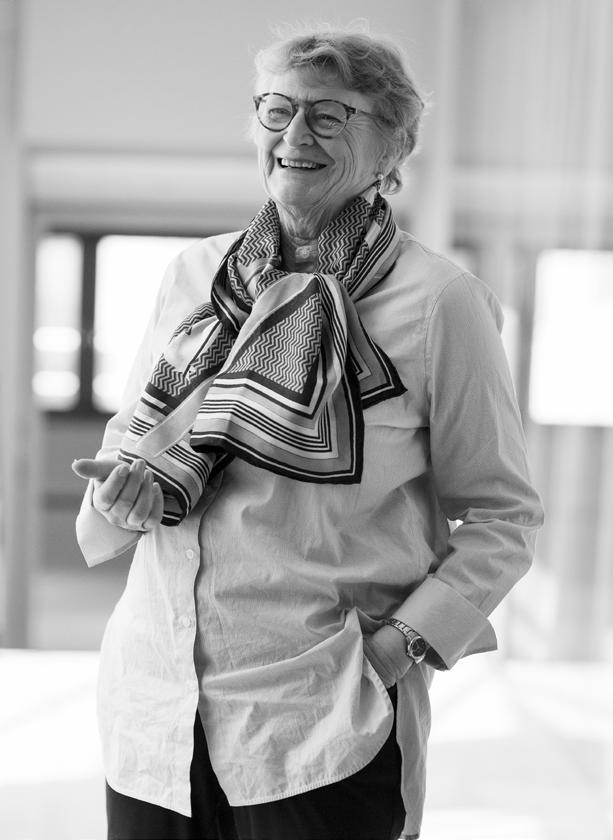
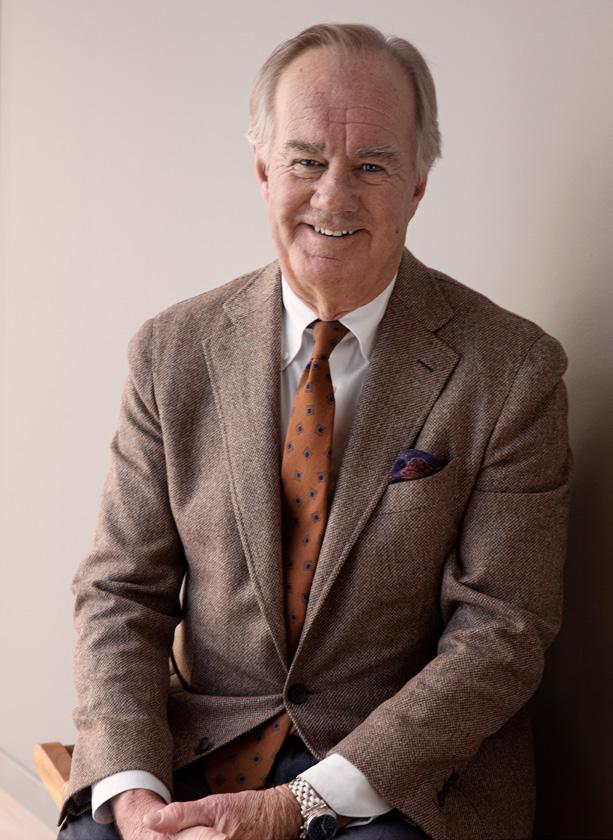
1998–2020 Chair of the Board at H&M.
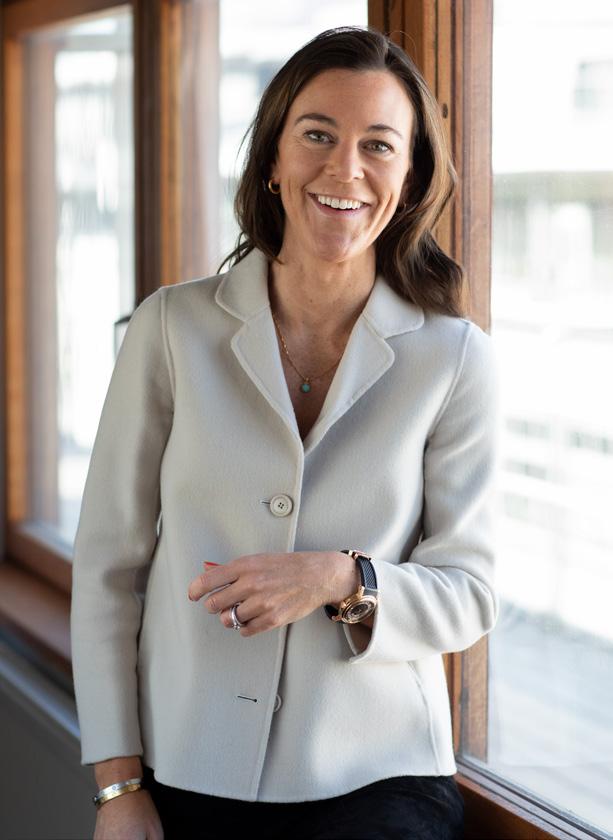
Other board positions at family companies.
ELISABETH TAMM Board member. Born 1947.
Elisabeth has degrees in law and business administration from Uppsala University. After a period as a notary she was employed at the Swedish Tax Agency in Stockholm. She has also been head of tax and family law at Carnegie and Ålandsbanken.
Elisabeth chairs or holds other positions of responsibility at a number of foundations, including the Alba Langenskiöld Foundation that is associated with publishing house Langenskiöld, the Foundation for the Astrid Lindgren Children’s Hospital, the Tranås Säteri Foundation and Sällskapet för Makarna Malmqvists minne.
CHARLOTTE SÖDERSTRÖM Board member. Born 1977.
Charlotte studied market economics at IIU. Up until the age of 21 she was an active competition rider in equestrian sport and today she runs the Stuteri Arch stud farm in Skåne in Southern Sweden. The stud farm breeds, trains and sells jumping horses and in 2019 and 2021 the International Federation for Equestrian Sports (Fédération Equestre Internationale – FEI) named her as its Owner of the Year. Charlotte is also project manager for the sponsorship project H&M We Love Horses.
Board member at family companies and of Haga Gårdsförvaltning.
TOM PERSSON
Board member. Born 1985.
From 2006 to 2010 Tom studied at the European Business School and Metropolitan Film School in London. He subsequently worked on the production and financing of TV and film projects. Since 2016 Tom has run the investment company CoMade that focuses on the media sector. Alongside his own company he works with around 10 other companies in film, television and sound.
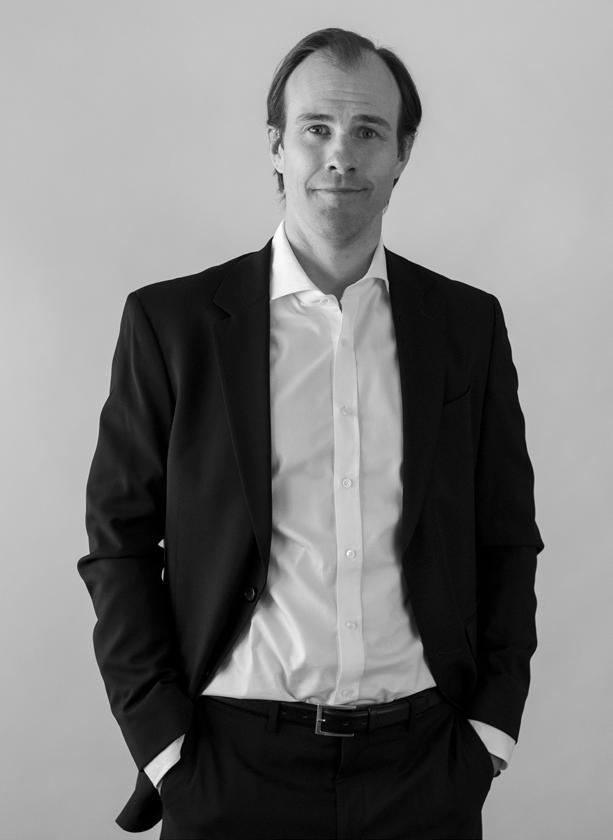
Board member at family companies and other companies including Breakable Films AB, Third Ear Studios AB, Playpilot AB, Art & Bob AB and Naudio AB.
MARI-ANNE CRONSIOE OREFORS Board member. Born 1957.
Mari-Anne has a degree in economics from Stockholm University. After graduating she worked for five years in H&M’s buying department. From 1985 to 2020 Mari-Anne had a key role at the Ramsbury family office as accounts and administrative manager. Mari-Anne was involved in the formation of the ErlingPersson Foundation and has also been part of the H&M Foundation since it was established in 2007.
Mari-Anne is on the board of the H&M Foundation and has been responsible for running the accounting and administrative side of the foundation during its first 20 years.
SIGBRIT FRANKE Board member. Born 1942.
Sigbrit completed a doctorate in 1975 at the Department of Education at Umeå University. In 1978 she became an associate professor and in 1982 a professor of education. For the 1987/1988 academic year she was a guest professor at UC Berkeley. Sigbrit was appointed vice-chancellor of Umeå University in 1992 and in 1999 became head of the Swedish National Agency for Higher Education.
Sigbrit held many positions of responsibility in both the private and the public sector; from 2007 until her death in October 2022 she was a highly valued member of the board of the Erling-Persson Foundation.
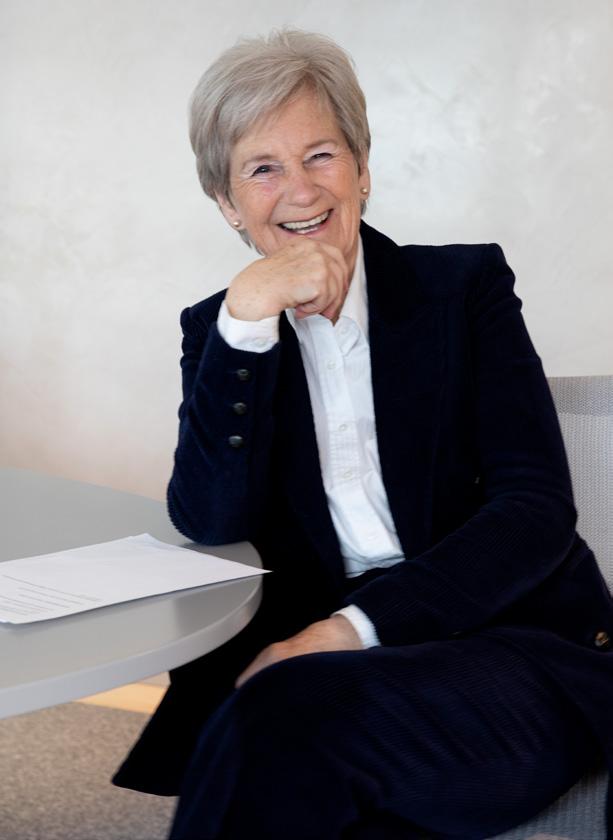

*Refers to grants awarded but not yet paid out.
Ylva Linderson, Research Secretary ylva.linderson@erlingperssonsstiftelse.se
Kristina Stenvinkel, Communications stenvinkel@ramsbury.se
The Erling-Persson Foundation
Drottninggatan 50 Box 1421, SE-111 84 Stockholm, Sweden erlingperssonsstiftelse.se
©Erling-Perssons Stiftelse, 2023
Photos: Magnus Glans, Carl Hjelte, Christopher Hunt, Daniela Spiroska, Johanna Åkerberg Kassel
Text: Lotta Fredholm
Graphic design and production: Open Studio
Printing and binding: Stibo Complete
Typefaces: Brown Pro and Sabon
Paper: Colorplan Stone 350 g and Munken Polar Rough 150 g